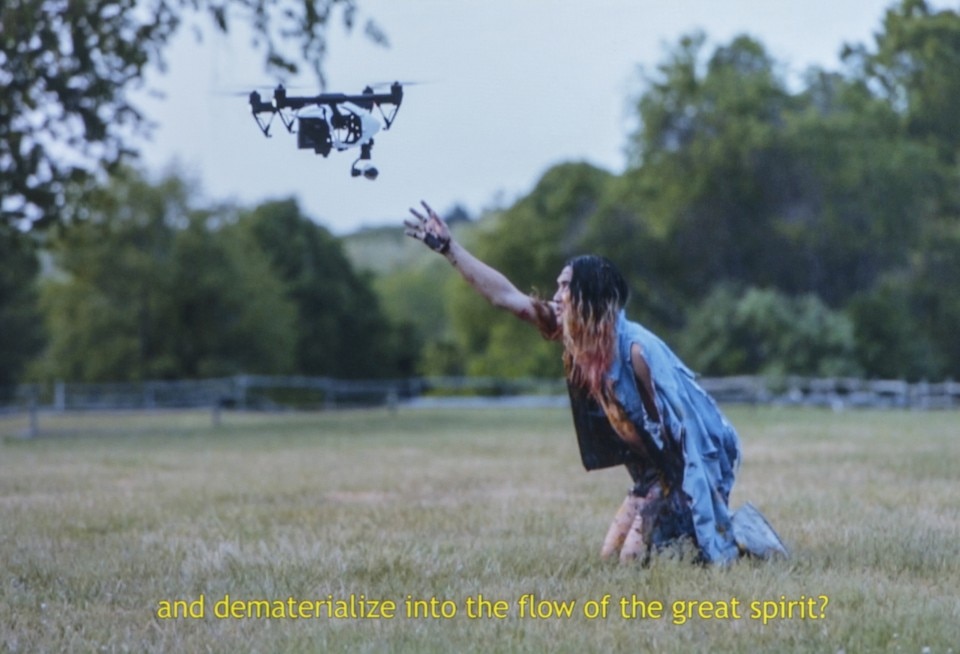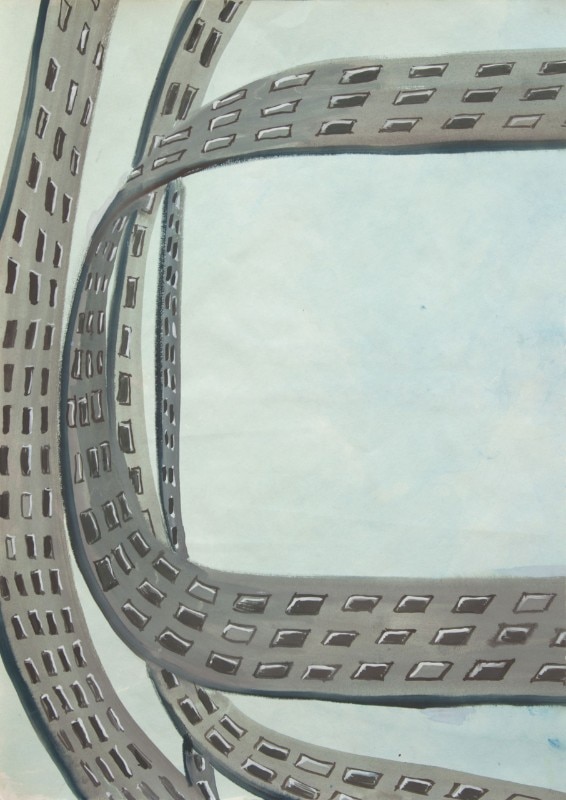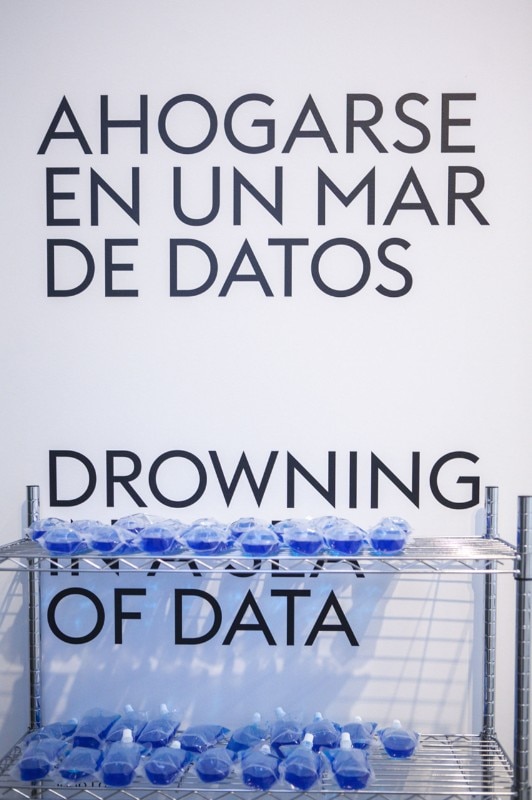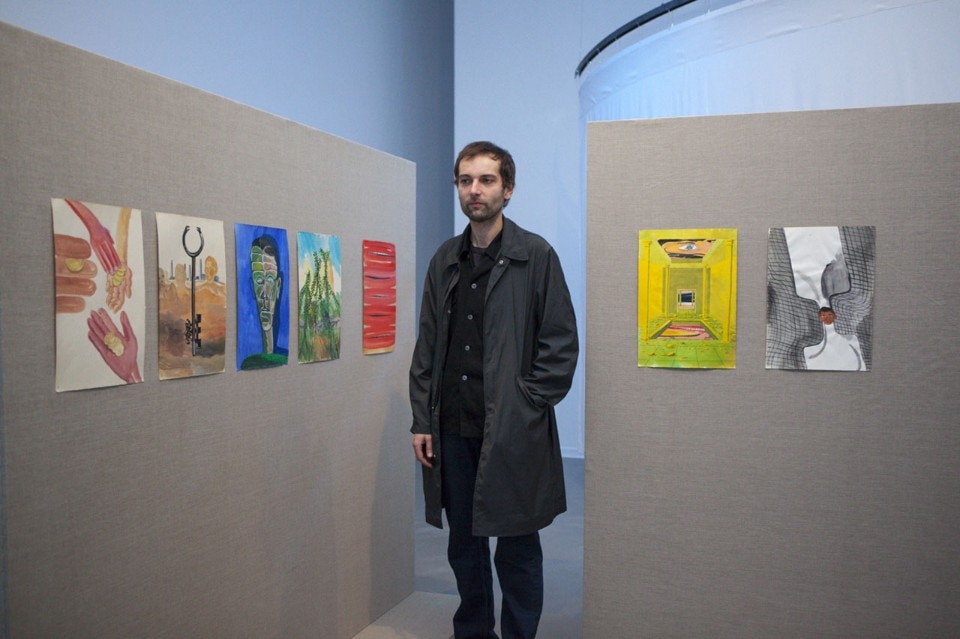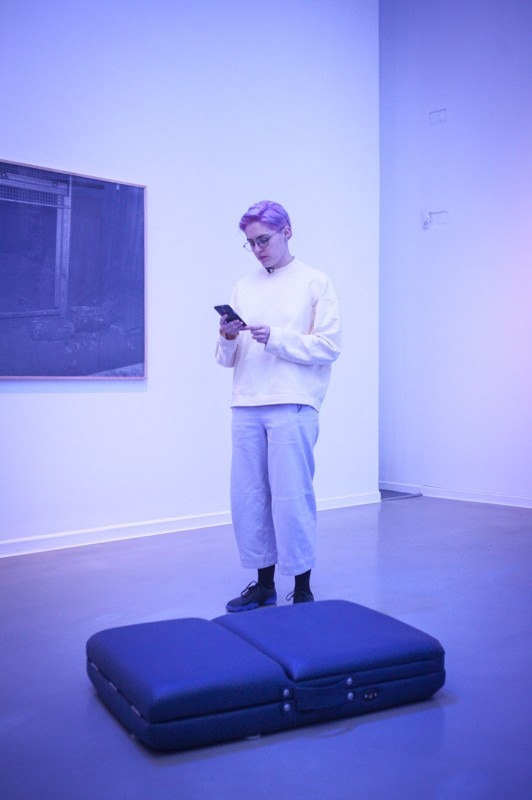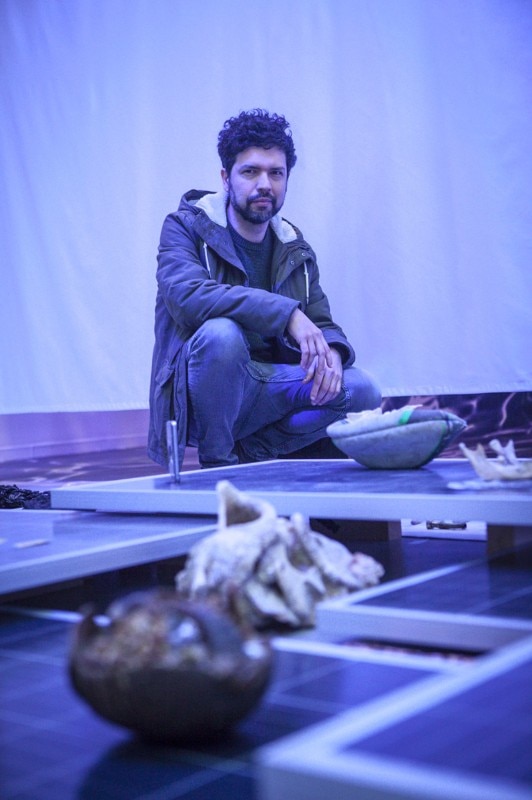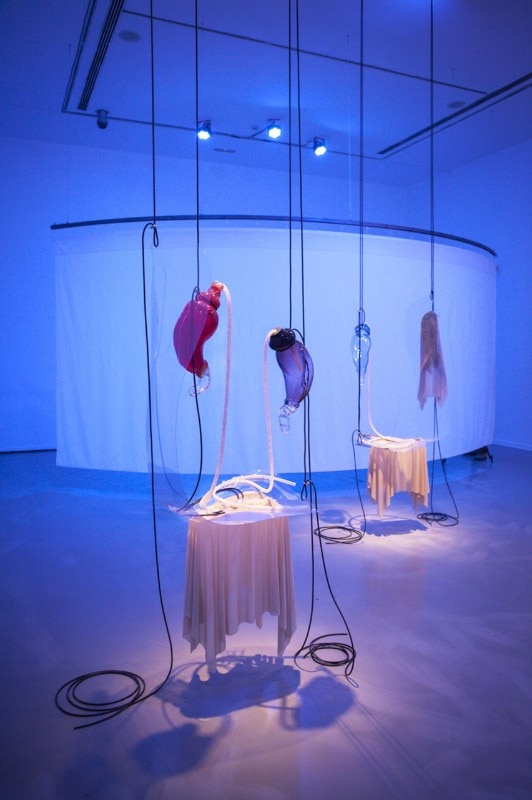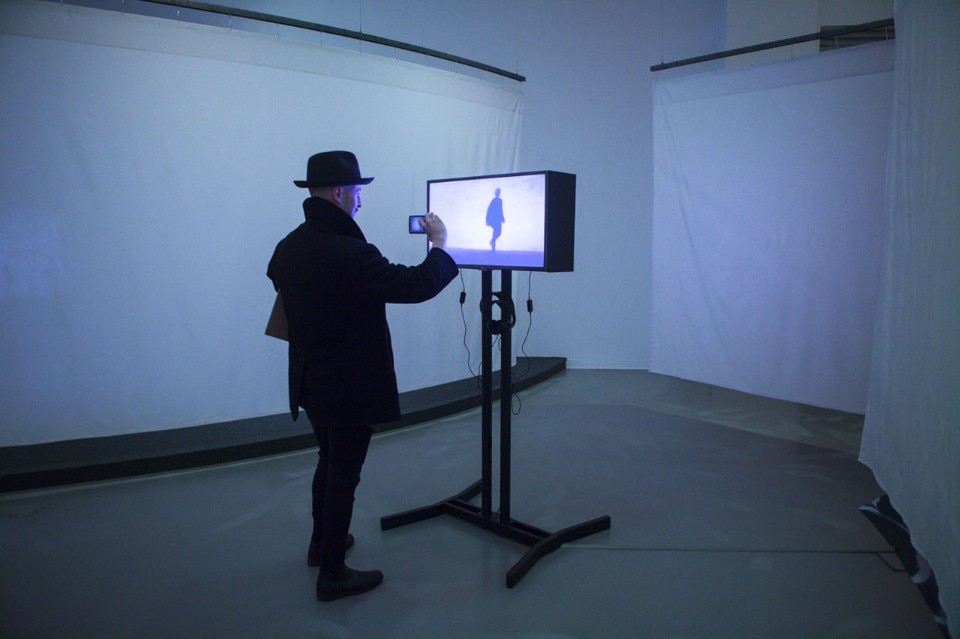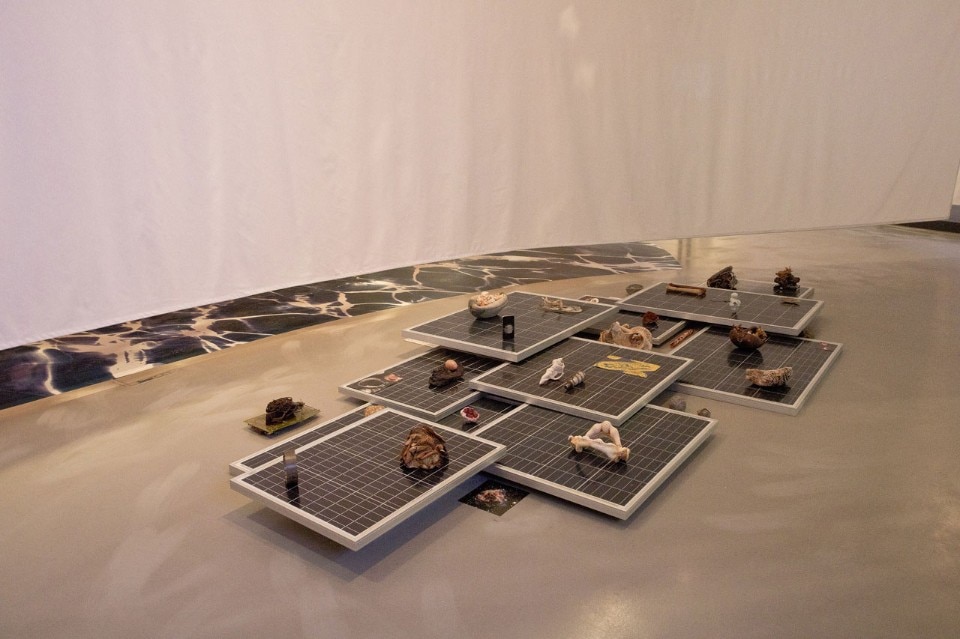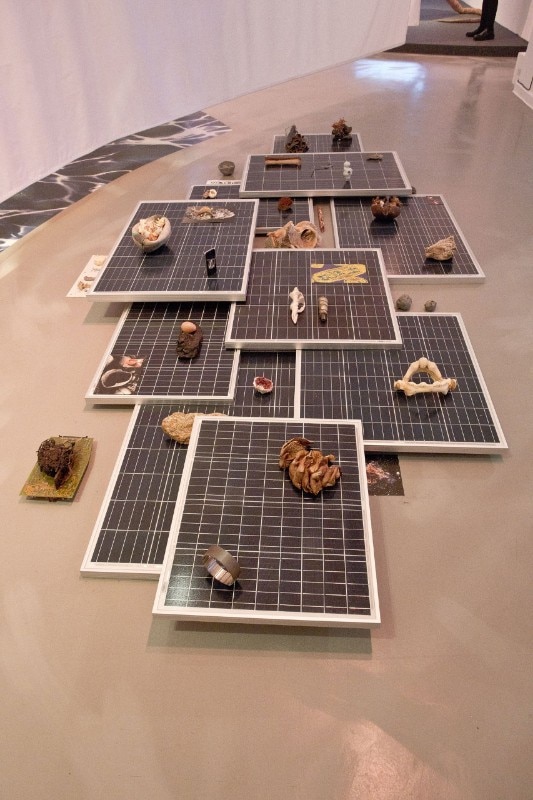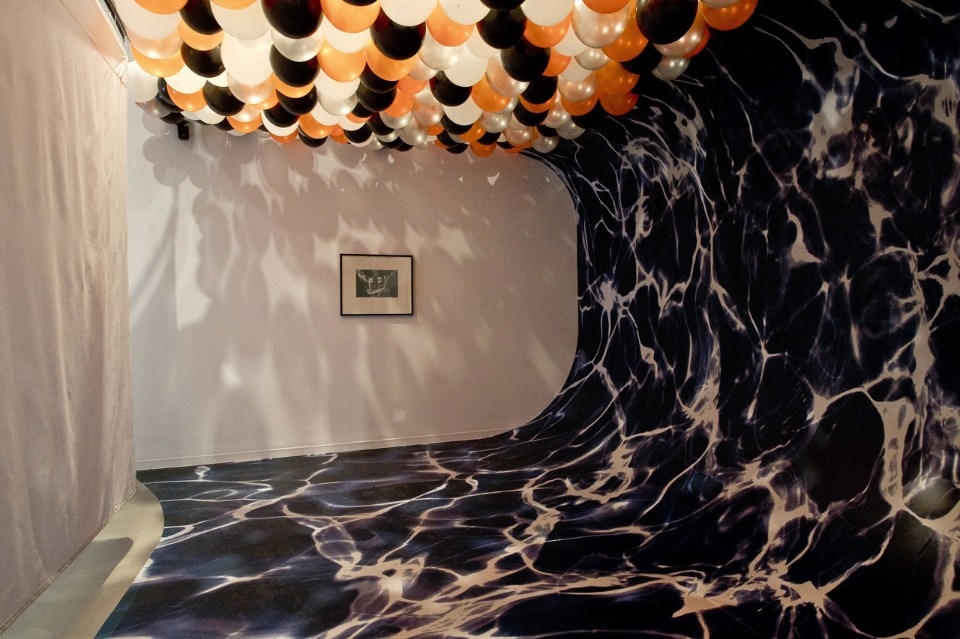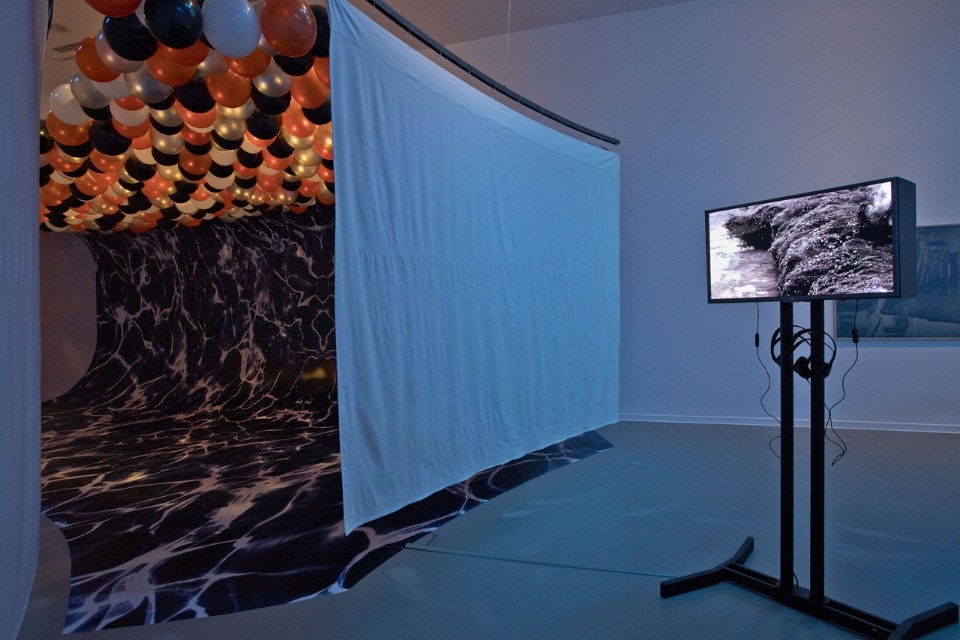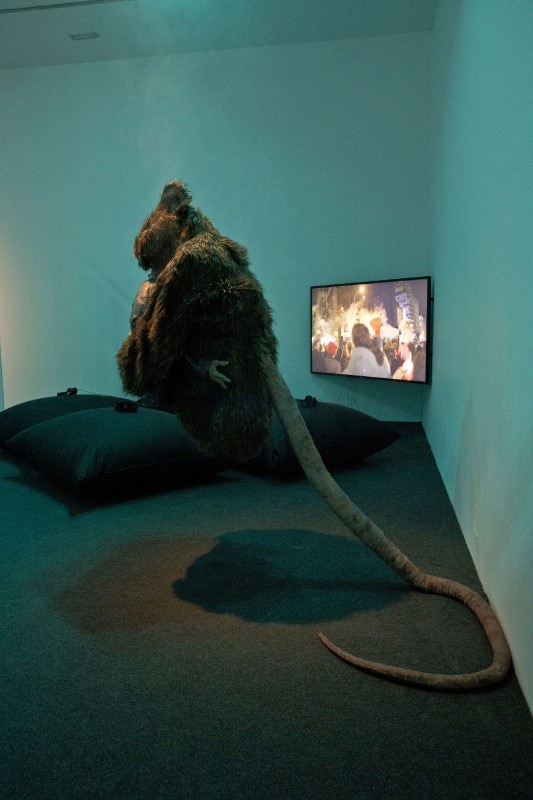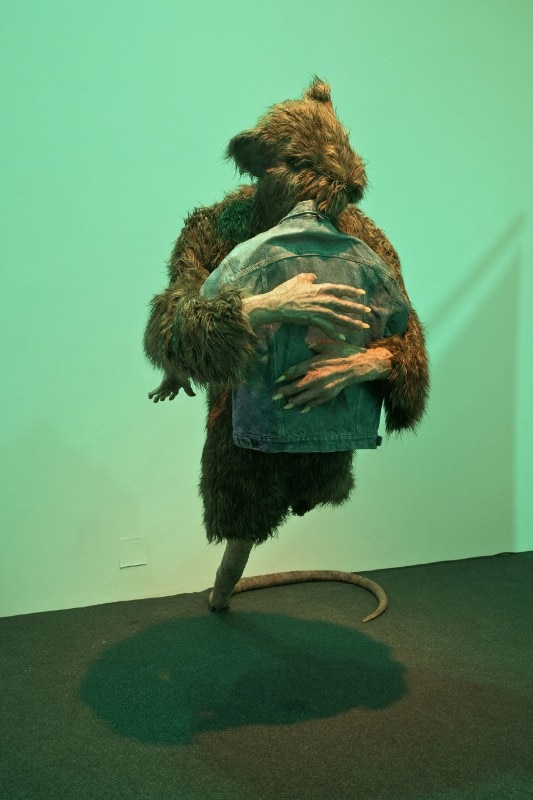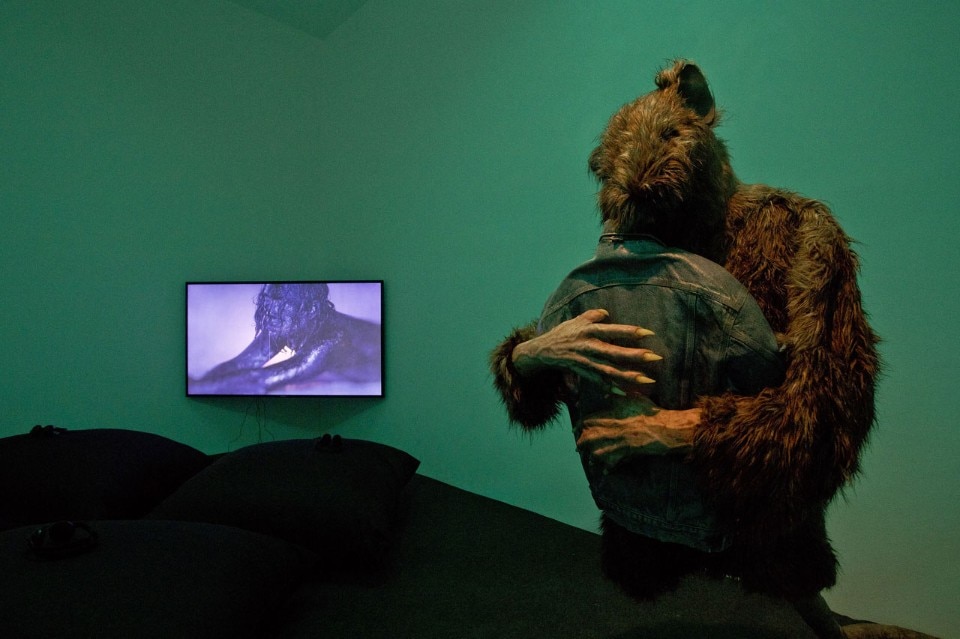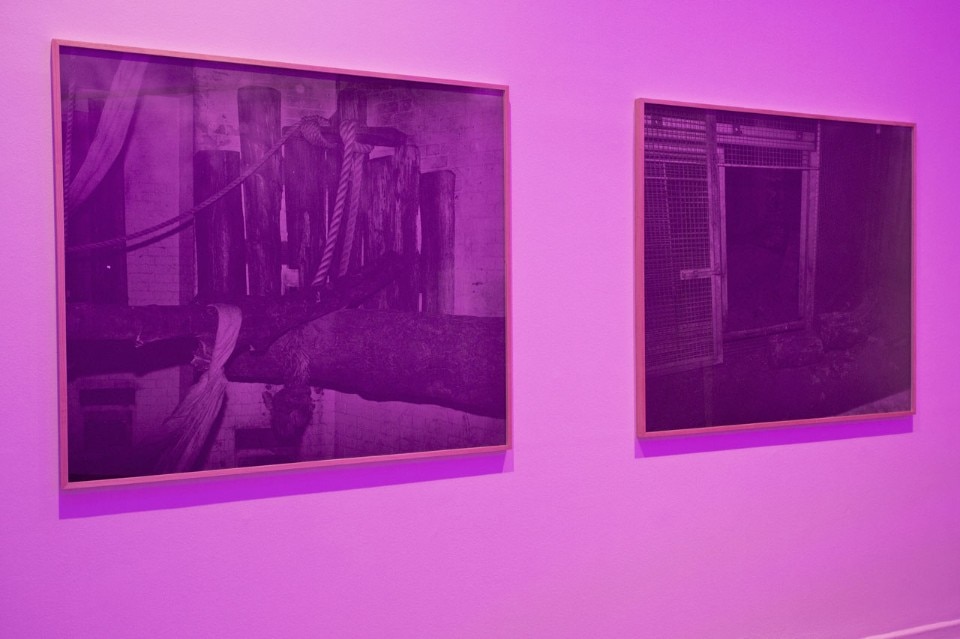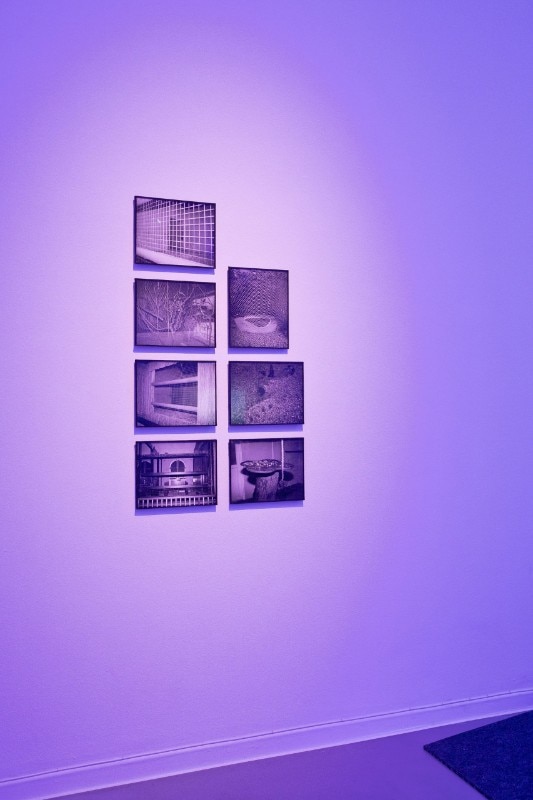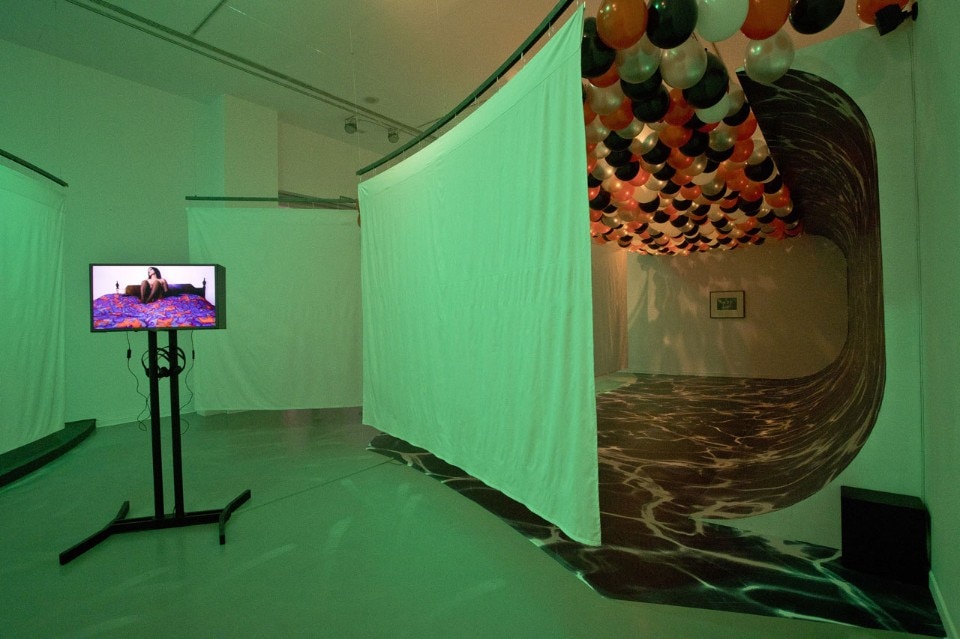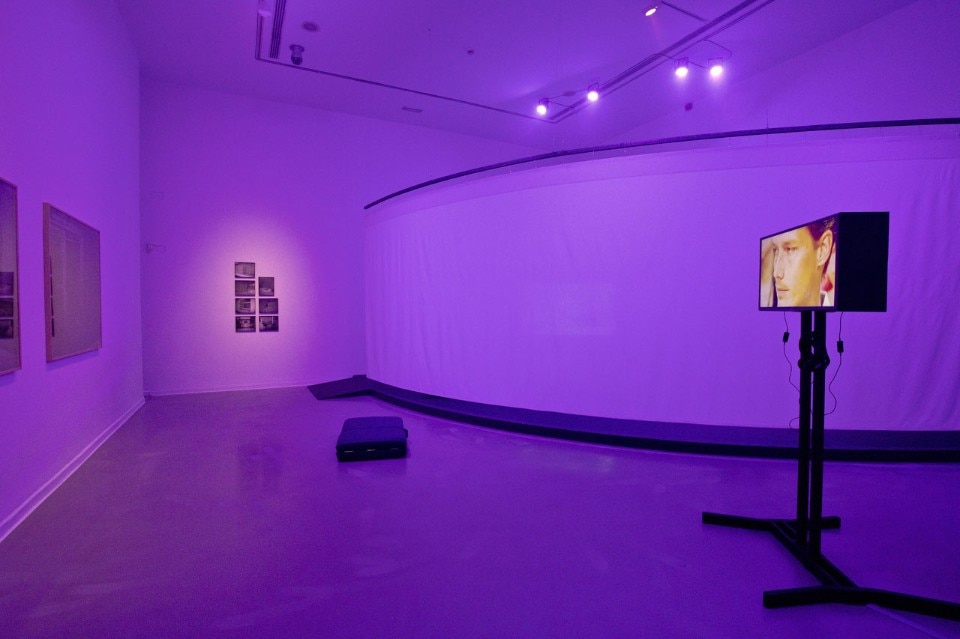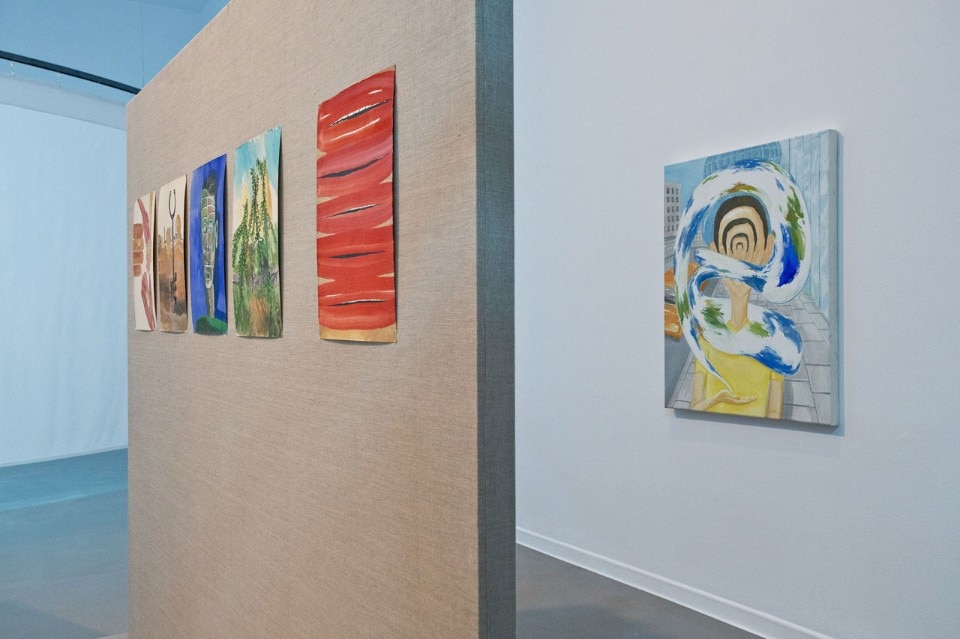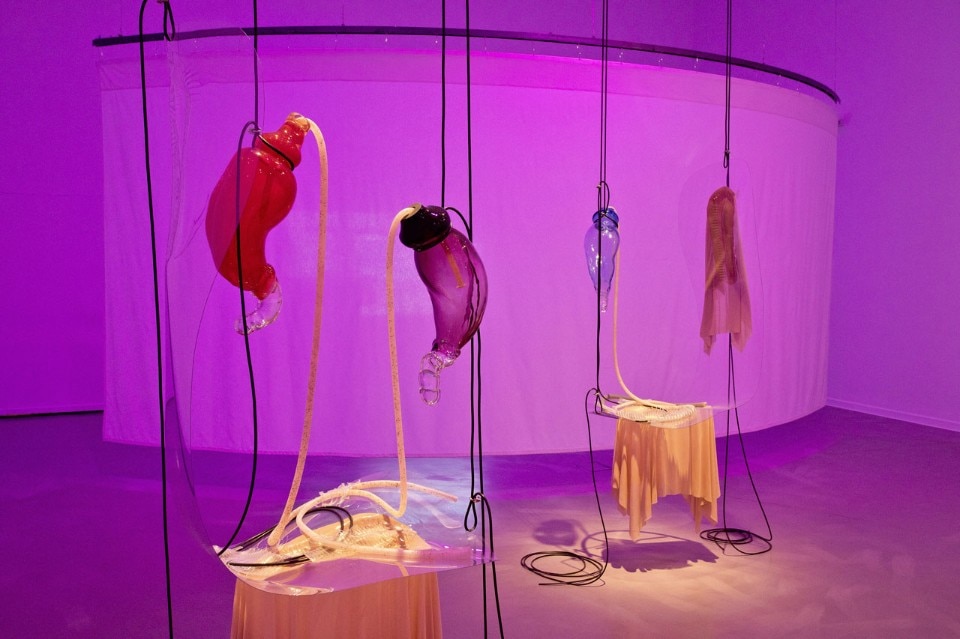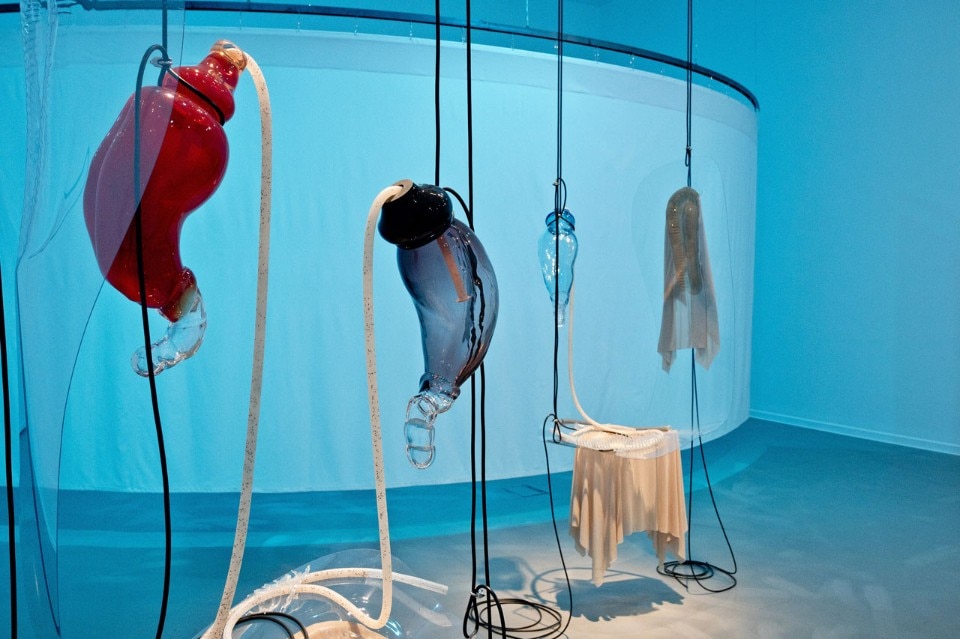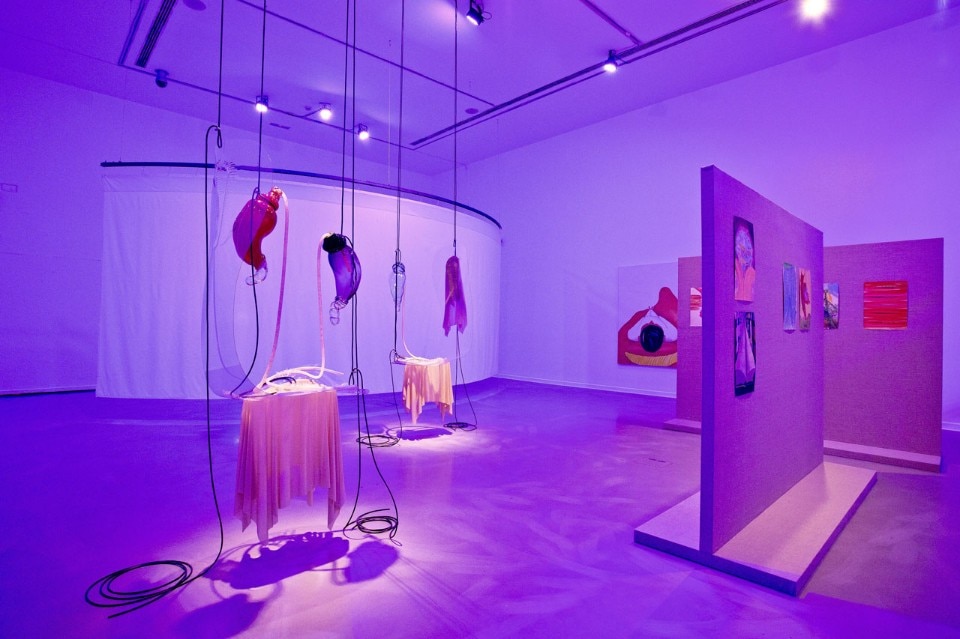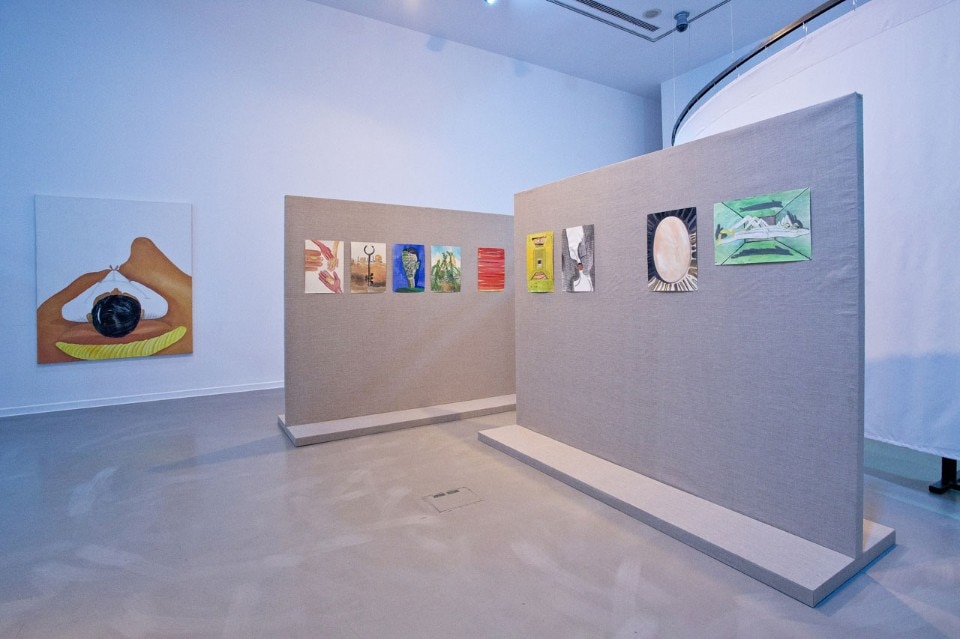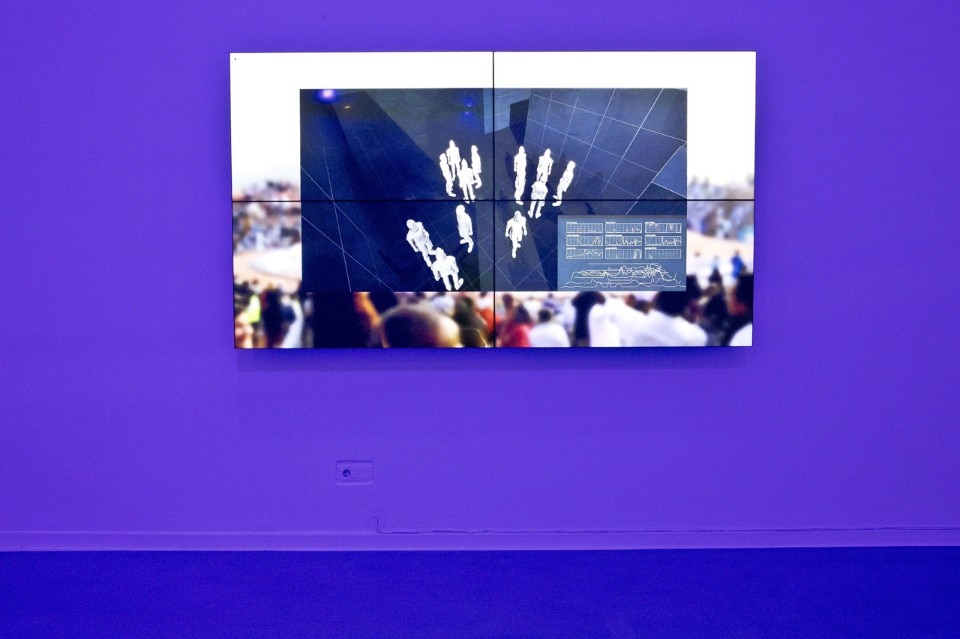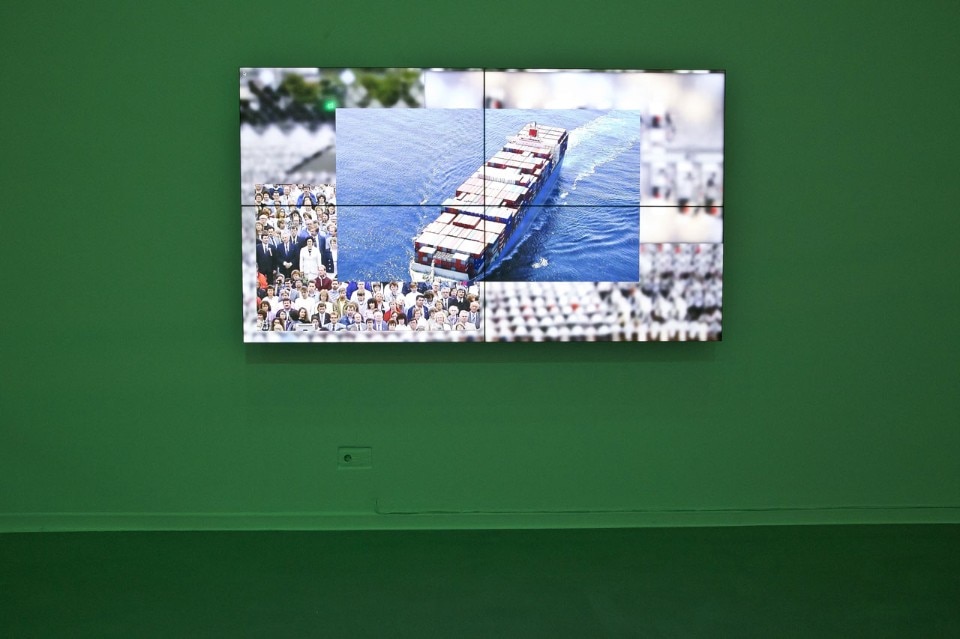Right from the title, the project “Drowning in a Sea of Data” seems to create empathy with any social individual experiencing the existential condition we are immersed in. The relentless submission to an entity which looms over us is a repeated idea within the project, which is composed of an exhibition, a number of performances and a catalogue.
Three different methods of presentation at Casa Encendida (ephemeral, extended yet limited in time, of long duration) provoke a rethinking of the temporal dimension and, with specific reference to the exhibition, also a reconsideration of spatial coordinates. The visitor finds themselves in an environment which emphasises their presence both as an observer and a producer of space.
It is easy to compare this type of ambivalence to the experiences of those who navigate through the data network. The feeling of “drowning in a sea” is thus transformed into upside down navigation on the ocean surface, where the boat continues to float, even though it is completely submerged.
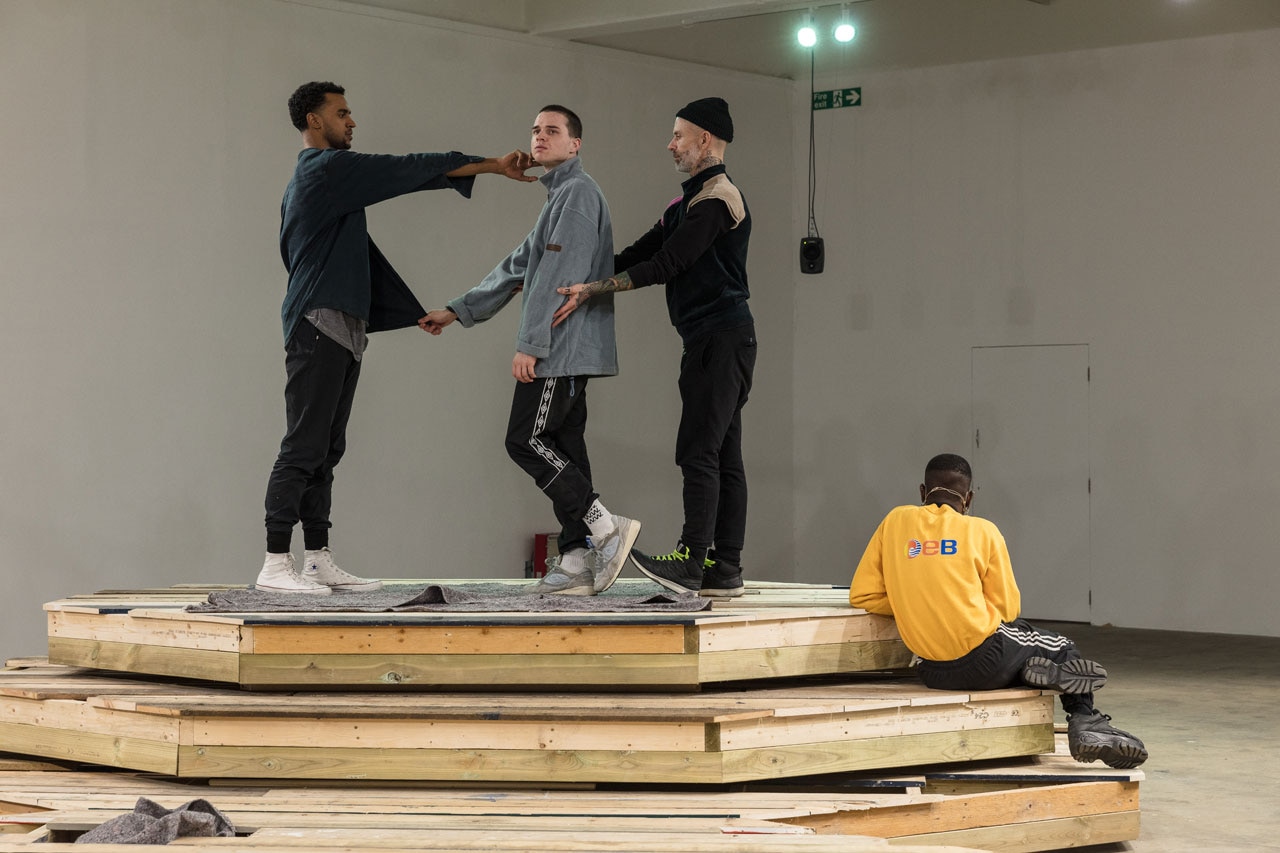
 View gallery
View gallery
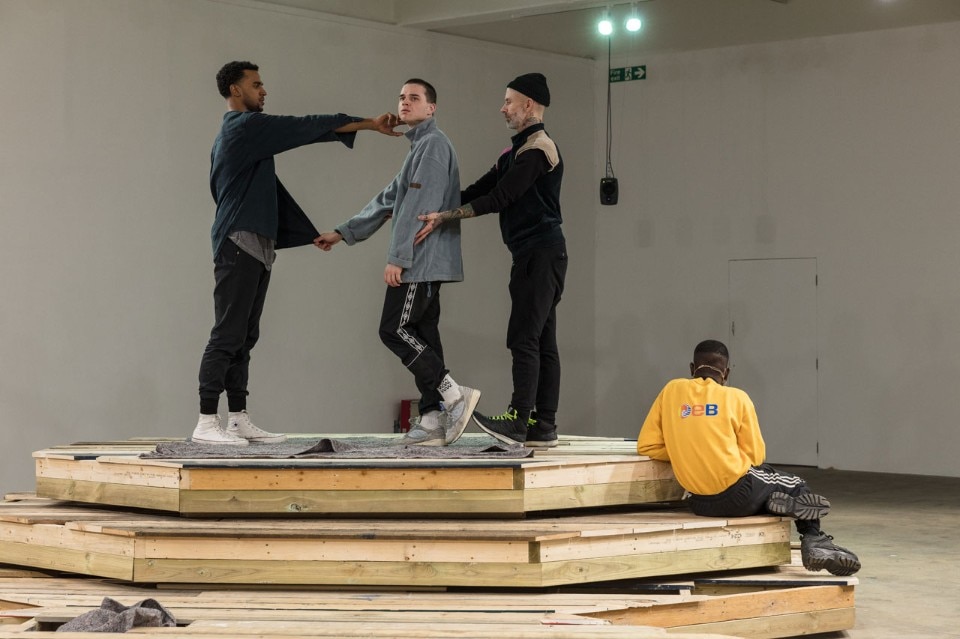
Alex Baczynski-Jenkins, The Tremble, the sympton, the swell and the hole together
La Casa Encendida, exhibition “Drawning in a sea of data”, Madrid, 2019
Photo Mark Blower, produced and commissioned by Galería Chisenhal
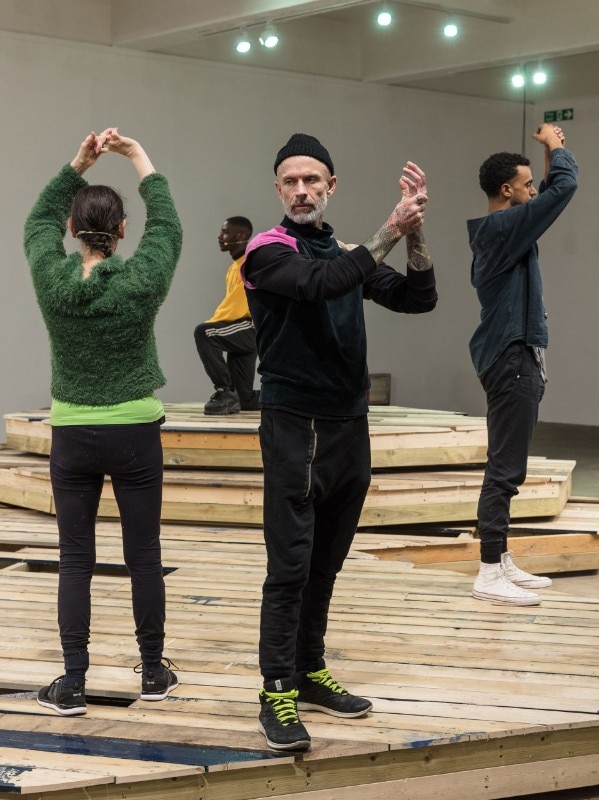
Alex Baczynski-Jenkins, The Tremble, the sympton, the swell and the hole together
La Casa Encendida, exhibition “Drowning in a sea of data”, Madrid, 2019
Photo Mark Blower, produced and commissioned by Galería Chisenhal
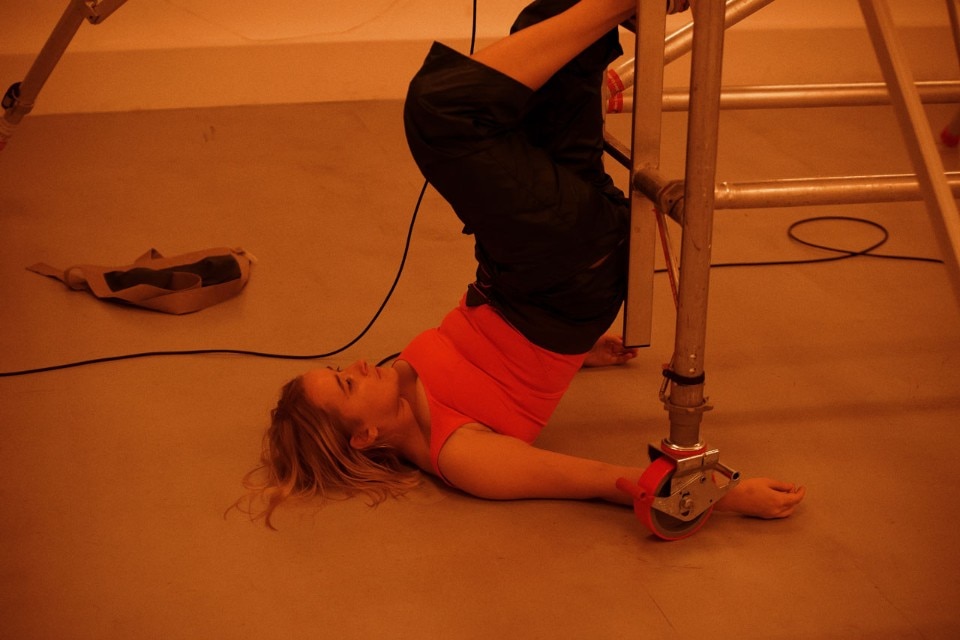
Monika Janulevičiūtė and Antanas Lučiūnas, GIRLSONFIRE
La Casa Encendida, exhibition “Drowning in a sea of data”, Madrid, 2019
Photo Katarzyna Perlak
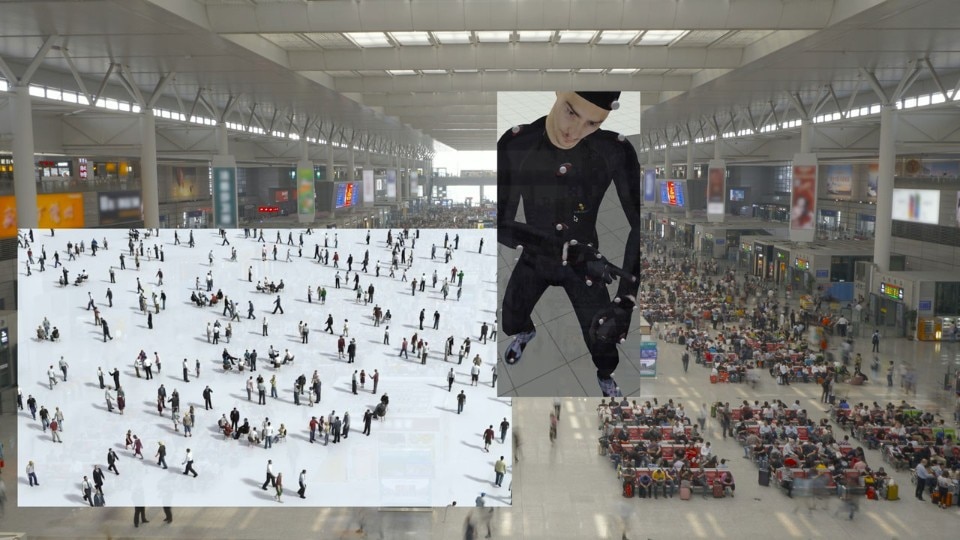
Clemens von Wedemeyer, Transformation Scenario
La Casa Encendida, exhibition “Drowning in a sea of data”, Madrid, 2019
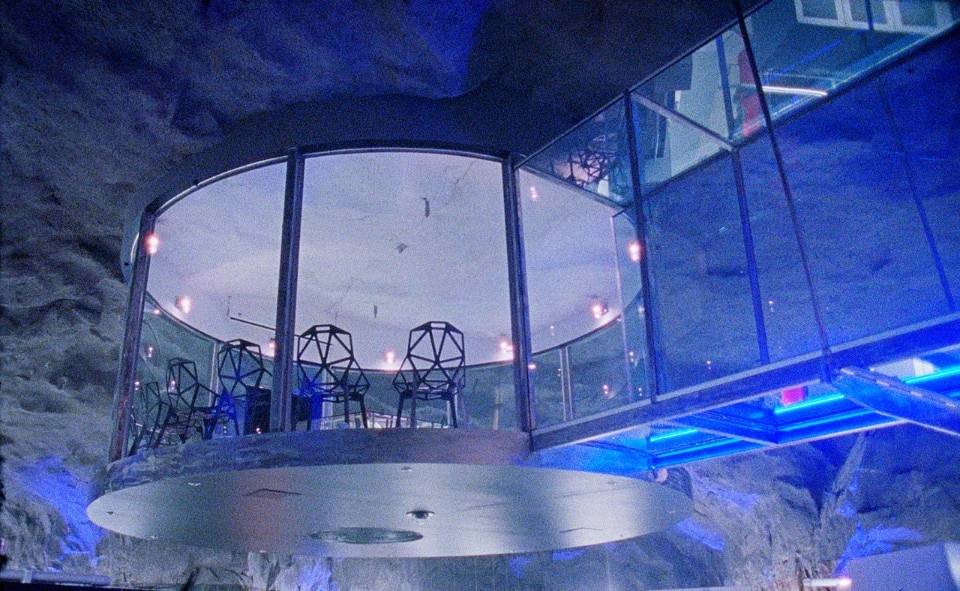
Emma Charles An Interview with Pionen architect, Albert France-Lanord
La Casa Encendida, exhibition “Drowning in a sea of data”, Madrid, 2019
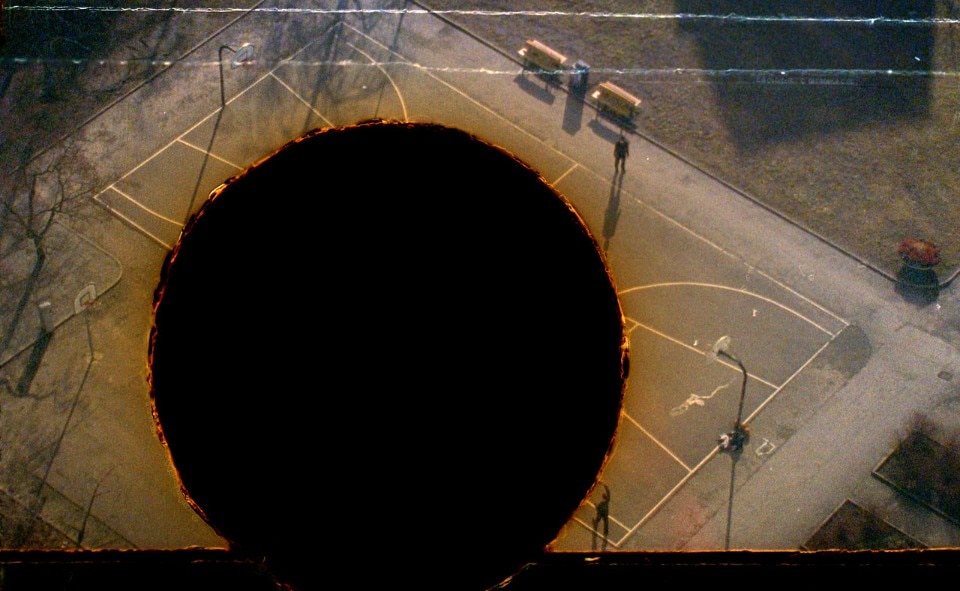
Emma Charles, An Interview with Pionen architect, Albert France-Lanord
La Casa Encendida, exhibition “Drowning in a sea of data”, Madrid, 2019
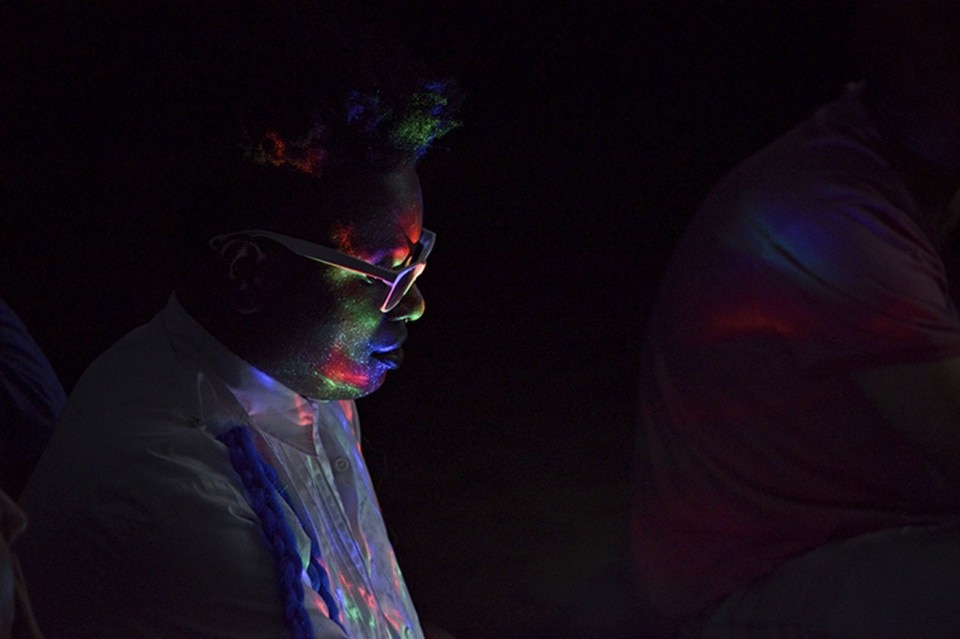
Evan Ifekoya, A Score, a groove, a phantom
La Casa Encendida, exhibition “Drowning in a sea of data”, Madrid, 2019
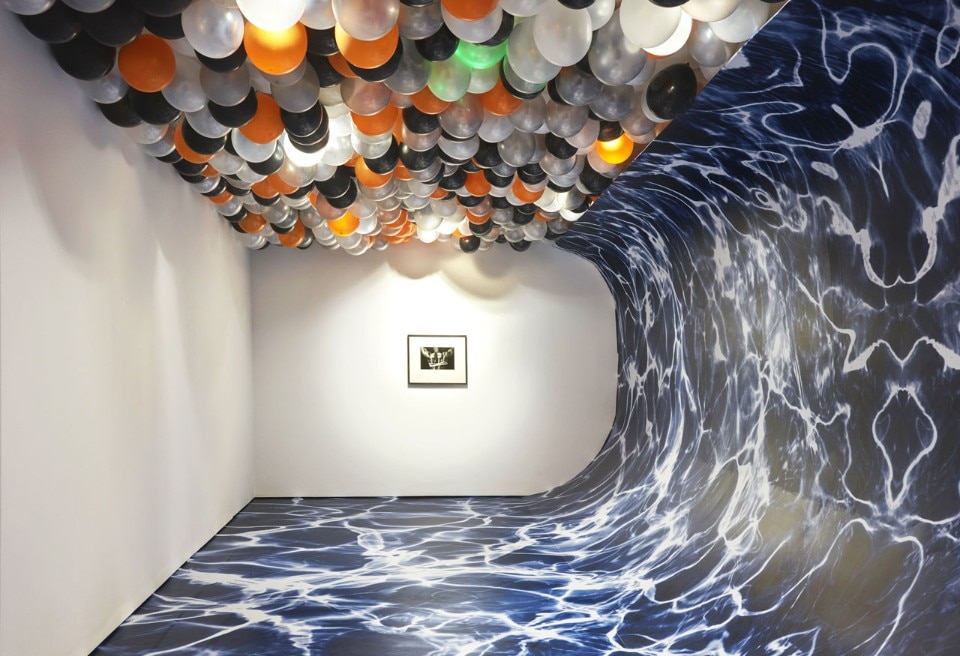
Evan Ifekoya, Ritual Without Belief
La Casa Encendida, exhibition “Drowning in a sea of data”, Madrid, 2019
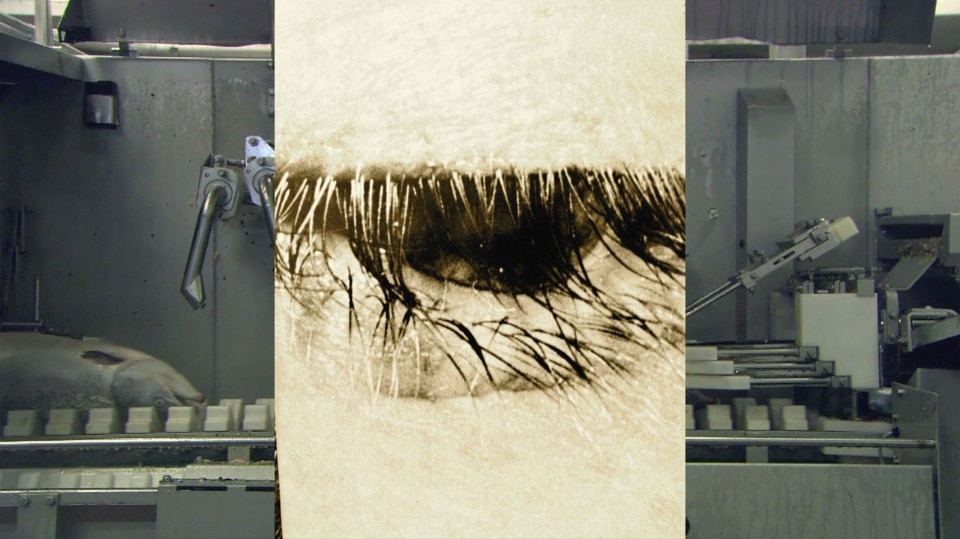
James Richards and Leslie Thornton, Crossing, 2016
La Casa Encendida, exhibition “Drowning in a sea of data”, Madrid, 2019
Video, courtesy the artists and Rodeo, London / Piraeus
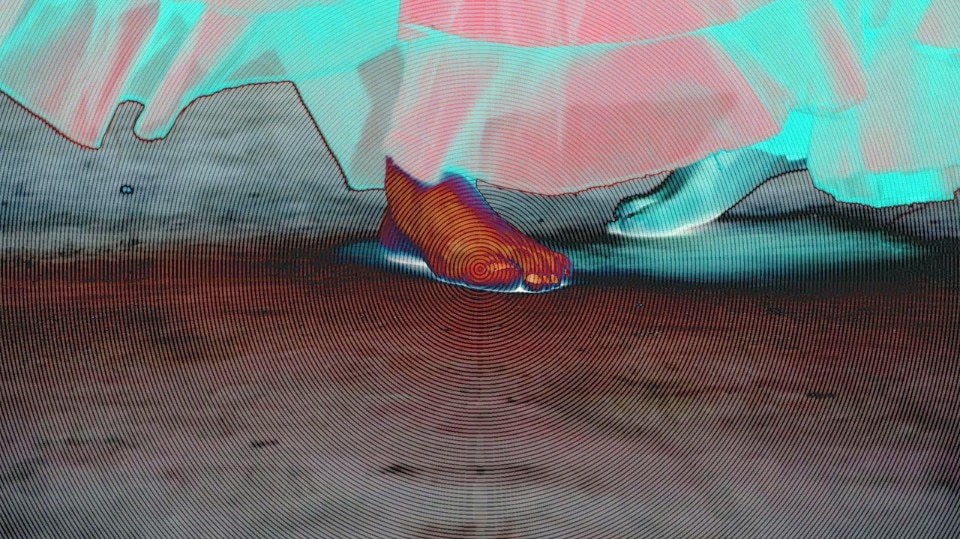
James Richards e Leslie Thornton, Crossing. Feet dance, 2016
La Casa Encendida, exhibition “Drowning in a sea of data”, Madrid, 2019
Video, courtesy gli artisti e Rodeo, Londra / Piraeus. Photo Lais Pereira.
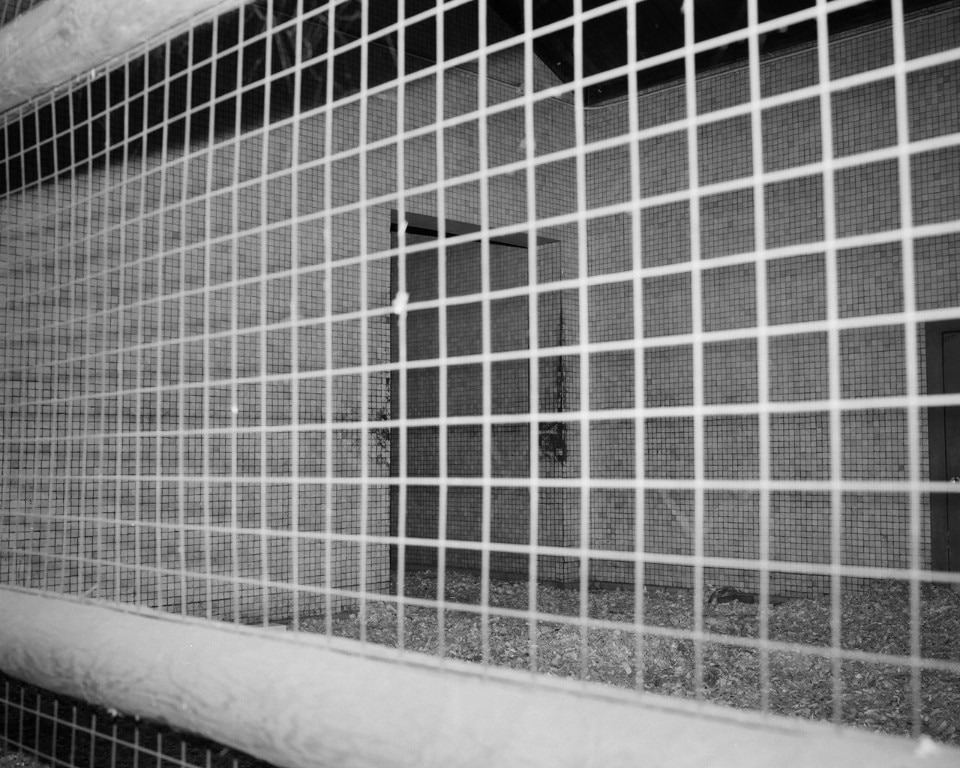
Joanna Piotrowska, Enclosure X, 2018
La Casa Encendida, exhibition “Drowning in a sea of data”, Madrid, 2019
Courtesy l’artista and Southard Reid
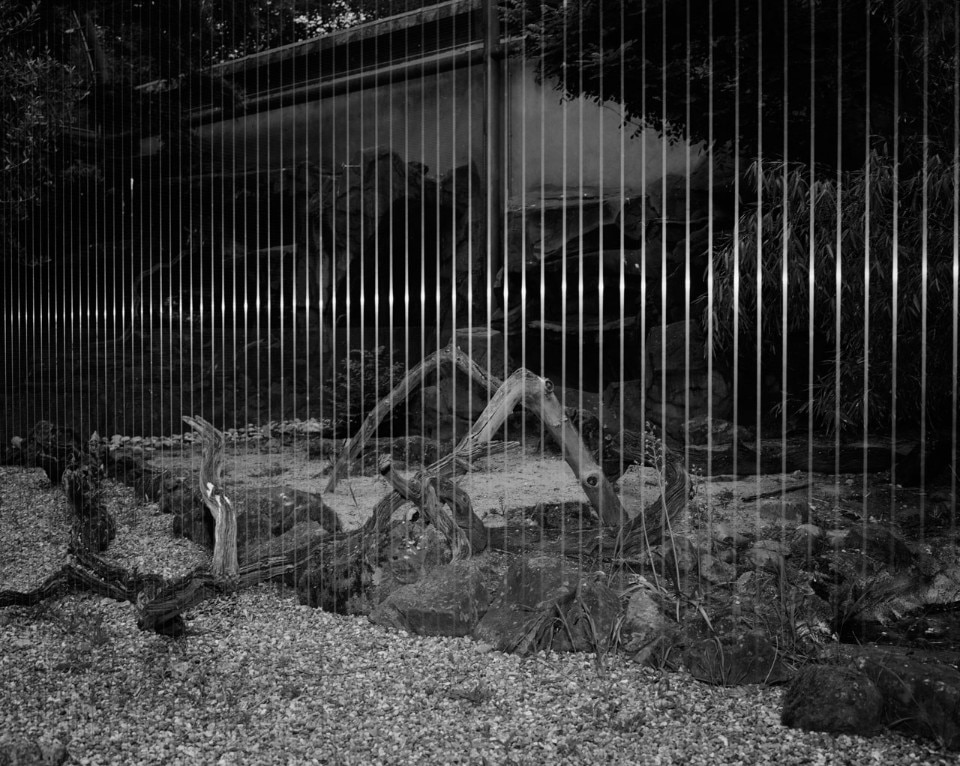
Joanna Piotrowska, Enclosure XII, 2018
La Casa Encendida, exhibition “Drowning in a sea of data”, Madrid, 2019
Courtesy l’artista and Southard Reid
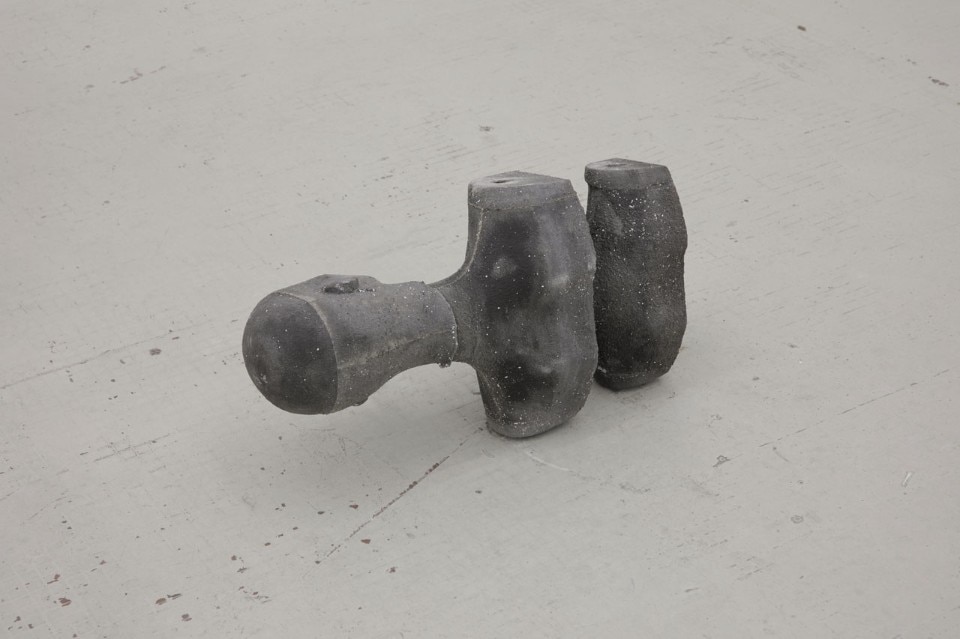
June Crespo, Hammer, 2018
La Casa Encendida, exhibition “Drowning in a sea of data”, Madrid, 2019
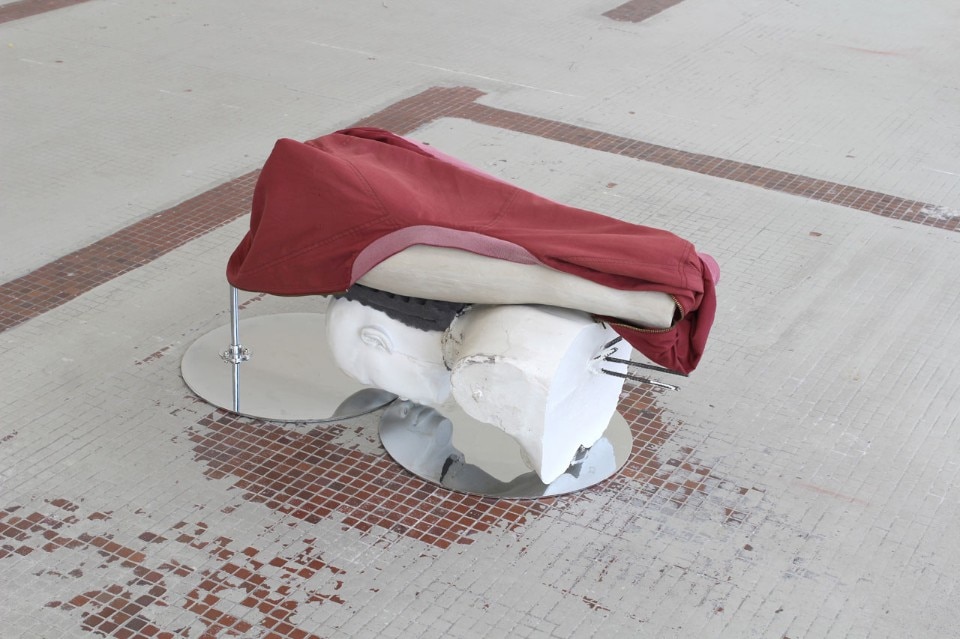
June Crespo, Nao, 2018
La Casa Encendida, exhibition “Drowning in a sea of data”, Madrid, 2019

Korakrit Arunanondchai, With history in a room filled with people with funny names 4, 2017
La Casa Encendida, exhibition “Drowning in a sea of data”, Madrid, 2019
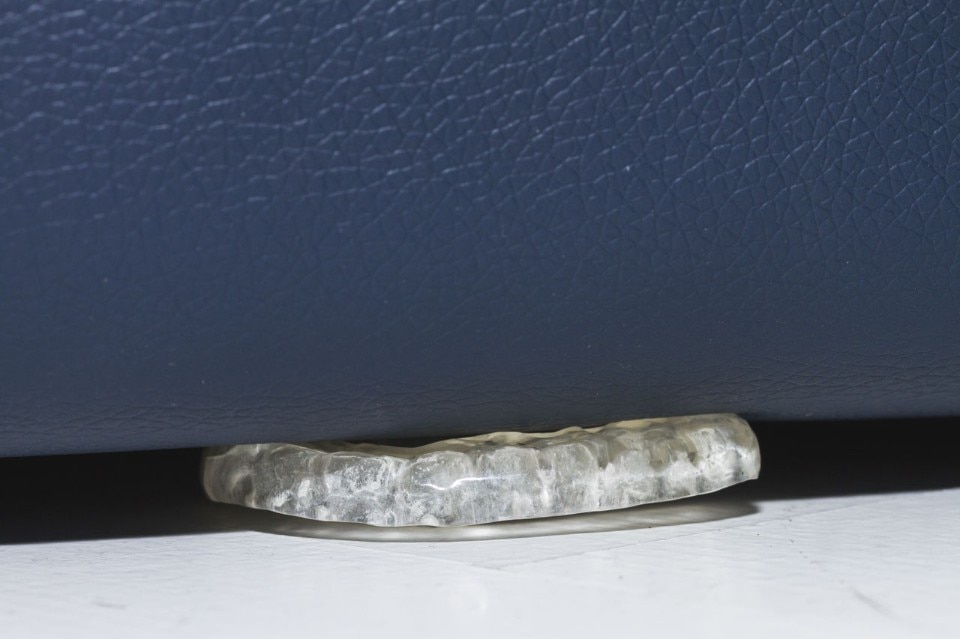
M Reme Silvestre, Untitled, 2017
La Casa Encendida, exhibition “Drowning in a sea of data”, Madrid, 2019

M Reme Silvestre, Untitled, 2017
La Casa Encendida, exhibition “Drowning in a sea of data”, Madrid, 2019

Nicolás Lamas, Untitled, 2018
La Casa Encendida, exhibition “Drowning in a sea of data”, Madrid, 2019

Pakui Hardware, The Return of Sweetnes, 2018
La Casa Encendida, exhibition “Drowning in a sea of data”, Madrid, 2019
Installation, 13 Baltic Triennial Give up the Ghost, Contemporary Art Centre, Vilnius. Photo Andrej Vasilenko, courtesy the artist
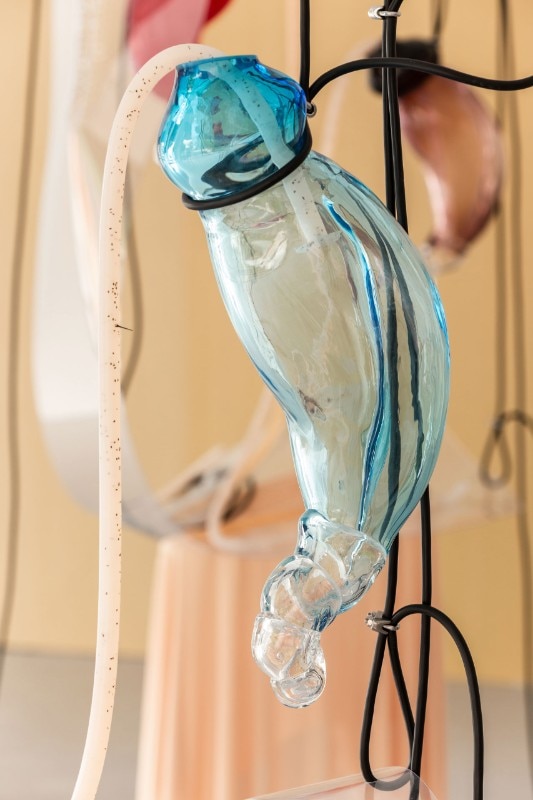
Pakui Hardware, The Return of Sweetnes, 2018
La Casa Encendida, exhibition “Drowning in a sea of data”, Madrid, 2019
Installation, 13 Baltic Triennial Give up the Ghost, Contemporary Art Centre, Vilnius. Photo Andrej Vasilenko, courtesy the artist
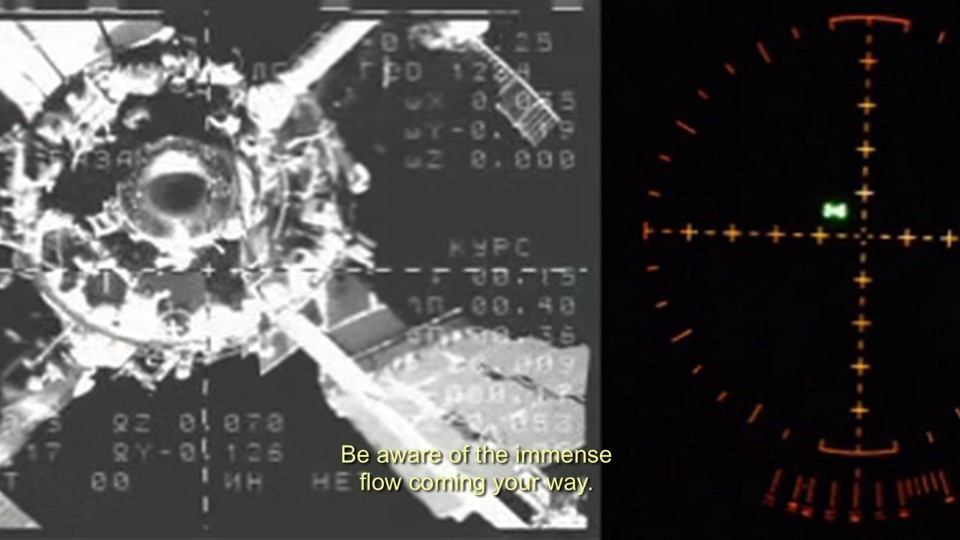
Pedro Barateiro, How to make a mask, 2011
La Casa Encendida, exhibition “Drowning in a sea of data”, Madrid, 2019
Performane, courtesy Centre Pompidou, Paris. Photo Hervé Veronesse

Pedro Barateiro, How to make a mask, 2011
La Casa Encendida, exhibition “Drowning in a sea of data”, Madrid, 2019
Performane, courtesy Centre Pompidou, Paris. Photo Hervé Veronesse
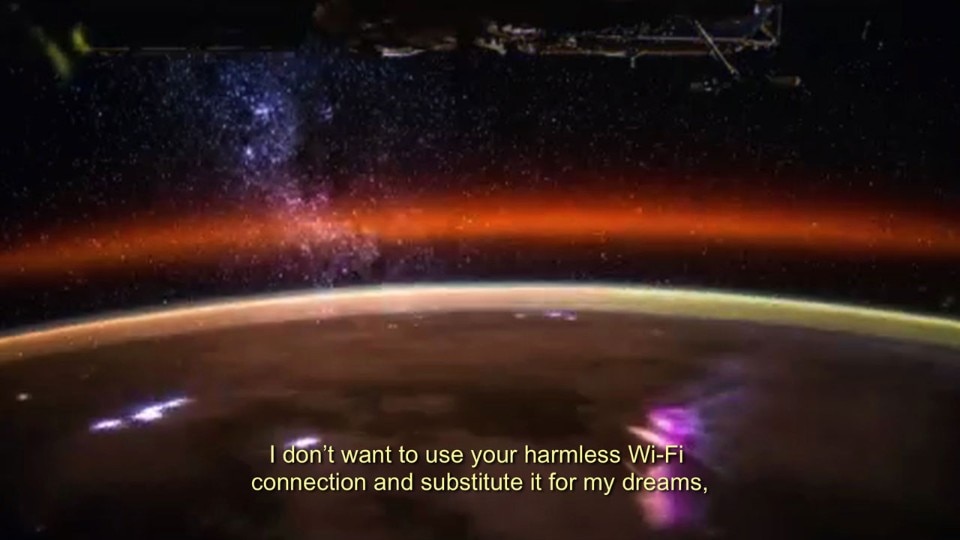
Pedro Barateiro, The Opening Monologue, 2018
La Casa Encendida, exhibition “Drowning in a sea of data”, Madrid, 2019
Video, courtesy the artist and Netwerk Aalst
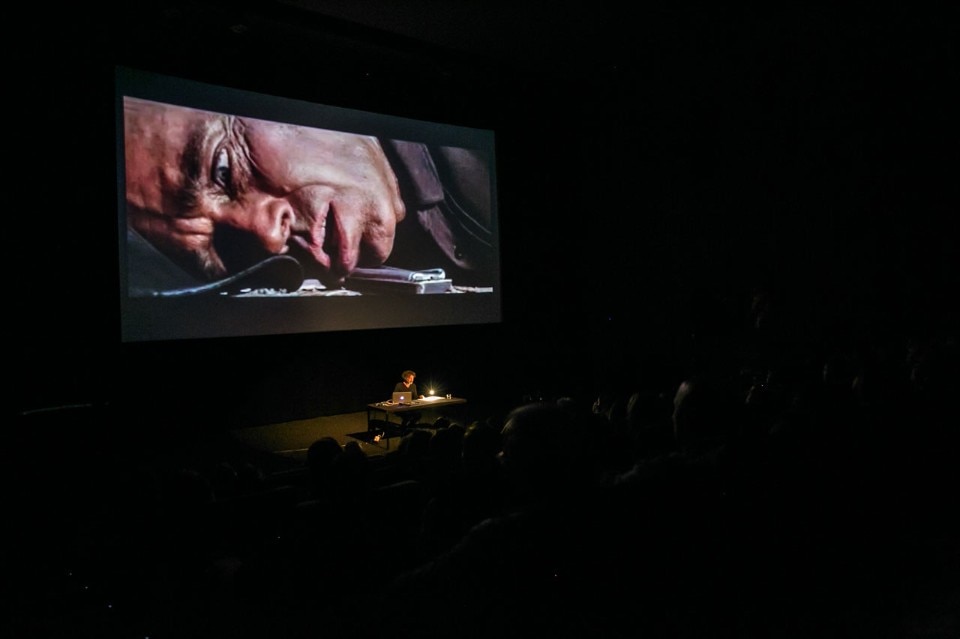
Rabih Mroué, Sand in the Eyes, 2017
La Casa Encendida, exhibition “Drowning in a sea of data”, Madrid, 2019
Amsterdam Art Weekend 2017, courtesy EYE Filmmuseum, Amsterdam. Foto Laisas Maria

Sofía Reyes, Bala (Bullet), 2018
La Casa Encendida, exhibition “Drowning in a sea of data”, Madrid, 2019
Video
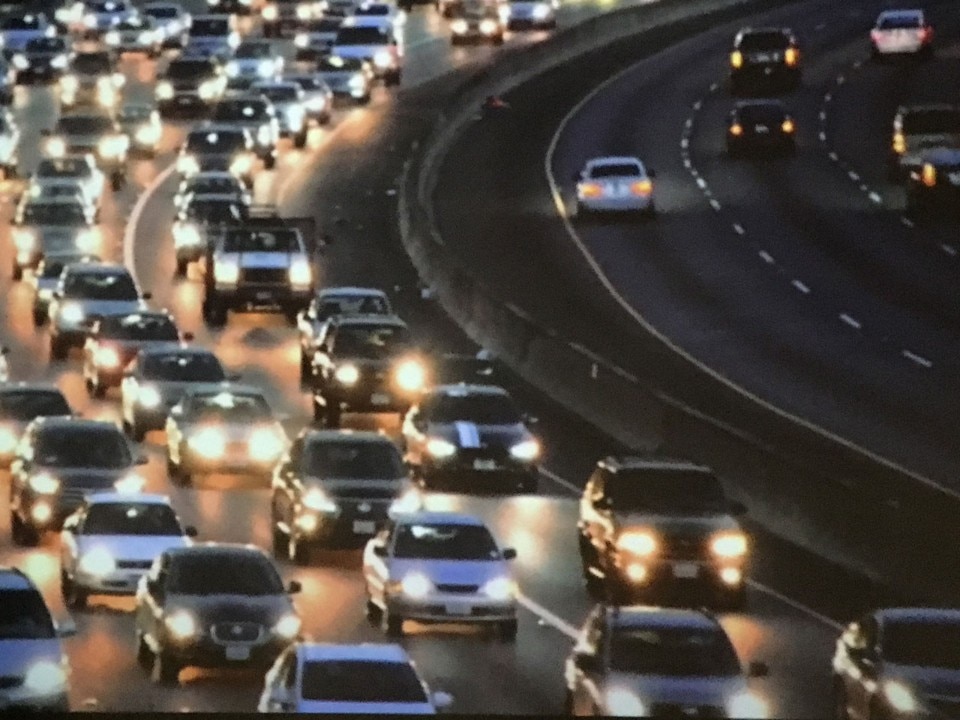
Sofía Reyes, New Anxieties, 2017
La Casa Encendida, exhibition “Drowning in a sea of data”, Madrid, 2019
Video
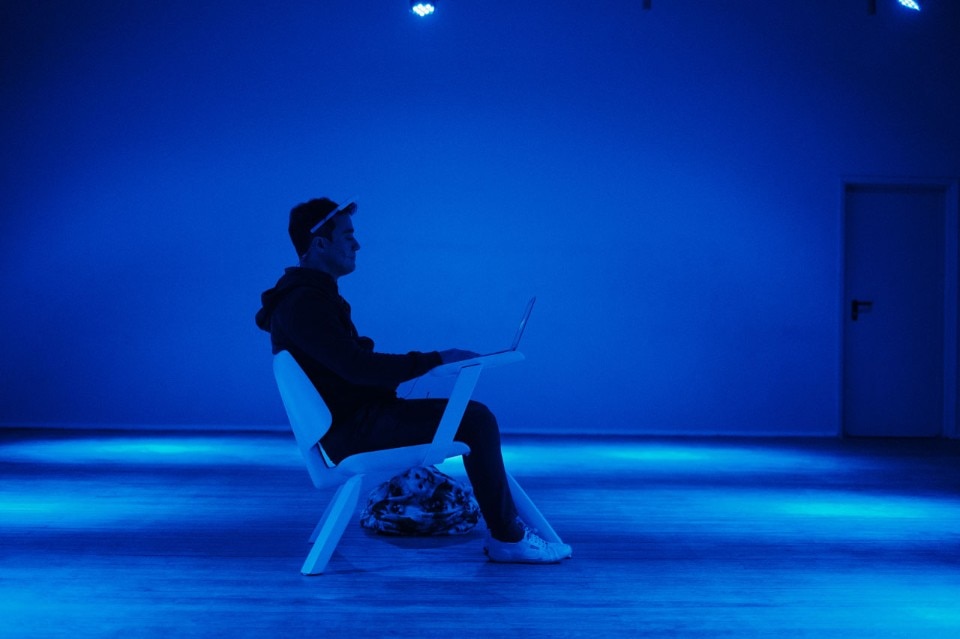
Teatro Praga, CONUNDRUM
La Casa Encendida, exhibition “Drowning in a sea of data”, Madrid, 2019
Commissioned by Susana Pomba, photo Vera Marmelo

Alex Baczynski-Jenkins, The Tremble, the sympton, the swell and the hole together
La Casa Encendida, exhibition “Drawning in a sea of data”, Madrid, 2019
Photo Mark Blower, produced and commissioned by Galería Chisenhal

Alex Baczynski-Jenkins, The Tremble, the sympton, the swell and the hole together
La Casa Encendida, exhibition “Drowning in a sea of data”, Madrid, 2019
Photo Mark Blower, produced and commissioned by Galería Chisenhal

Monika Janulevičiūtė and Antanas Lučiūnas, GIRLSONFIRE
La Casa Encendida, exhibition “Drowning in a sea of data”, Madrid, 2019
Photo Katarzyna Perlak

Clemens von Wedemeyer, Transformation Scenario
La Casa Encendida, exhibition “Drowning in a sea of data”, Madrid, 2019

Emma Charles An Interview with Pionen architect, Albert France-Lanord
La Casa Encendida, exhibition “Drowning in a sea of data”, Madrid, 2019

Emma Charles, An Interview with Pionen architect, Albert France-Lanord
La Casa Encendida, exhibition “Drowning in a sea of data”, Madrid, 2019

Evan Ifekoya, A Score, a groove, a phantom
La Casa Encendida, exhibition “Drowning in a sea of data”, Madrid, 2019

Evan Ifekoya, Ritual Without Belief
La Casa Encendida, exhibition “Drowning in a sea of data”, Madrid, 2019

James Richards and Leslie Thornton, Crossing, 2016
La Casa Encendida, exhibition “Drowning in a sea of data”, Madrid, 2019
Video, courtesy the artists and Rodeo, London / Piraeus

James Richards e Leslie Thornton, Crossing. Feet dance, 2016
La Casa Encendida, exhibition “Drowning in a sea of data”, Madrid, 2019
Video, courtesy gli artisti e Rodeo, Londra / Piraeus. Photo Lais Pereira.

Joanna Piotrowska, Enclosure X, 2018
La Casa Encendida, exhibition “Drowning in a sea of data”, Madrid, 2019
Courtesy l’artista and Southard Reid

Joanna Piotrowska, Enclosure XII, 2018
La Casa Encendida, exhibition “Drowning in a sea of data”, Madrid, 2019
Courtesy l’artista and Southard Reid

June Crespo, Hammer, 2018
La Casa Encendida, exhibition “Drowning in a sea of data”, Madrid, 2019

June Crespo, Nao, 2018
La Casa Encendida, exhibition “Drowning in a sea of data”, Madrid, 2019

Korakrit Arunanondchai, With history in a room filled with people with funny names 4, 2017
La Casa Encendida, exhibition “Drowning in a sea of data”, Madrid, 2019

M Reme Silvestre, Untitled, 2017
La Casa Encendida, exhibition “Drowning in a sea of data”, Madrid, 2019

M Reme Silvestre, Untitled, 2017
La Casa Encendida, exhibition “Drowning in a sea of data”, Madrid, 2019

Nicolás Lamas, Untitled, 2018
La Casa Encendida, exhibition “Drowning in a sea of data”, Madrid, 2019

Pakui Hardware, The Return of Sweetnes, 2018
La Casa Encendida, exhibition “Drowning in a sea of data”, Madrid, 2019
Installation, 13 Baltic Triennial Give up the Ghost, Contemporary Art Centre, Vilnius. Photo Andrej Vasilenko, courtesy the artist

Pakui Hardware, The Return of Sweetnes, 2018
La Casa Encendida, exhibition “Drowning in a sea of data”, Madrid, 2019
Installation, 13 Baltic Triennial Give up the Ghost, Contemporary Art Centre, Vilnius. Photo Andrej Vasilenko, courtesy the artist

Pedro Barateiro, How to make a mask, 2011
La Casa Encendida, exhibition “Drowning in a sea of data”, Madrid, 2019
Performane, courtesy Centre Pompidou, Paris. Photo Hervé Veronesse

Pedro Barateiro, How to make a mask, 2011
La Casa Encendida, exhibition “Drowning in a sea of data”, Madrid, 2019
Performane, courtesy Centre Pompidou, Paris. Photo Hervé Veronesse

Pedro Barateiro, The Opening Monologue, 2018
La Casa Encendida, exhibition “Drowning in a sea of data”, Madrid, 2019
Video, courtesy the artist and Netwerk Aalst

Rabih Mroué, Sand in the Eyes, 2017
La Casa Encendida, exhibition “Drowning in a sea of data”, Madrid, 2019
Amsterdam Art Weekend 2017, courtesy EYE Filmmuseum, Amsterdam. Foto Laisas Maria

Sofía Reyes, Bala (Bullet), 2018
La Casa Encendida, exhibition “Drowning in a sea of data”, Madrid, 2019
Video

Sofía Reyes, New Anxieties, 2017
La Casa Encendida, exhibition “Drowning in a sea of data”, Madrid, 2019
Video

Teatro Praga, CONUNDRUM
La Casa Encendida, exhibition “Drowning in a sea of data”, Madrid, 2019
Commissioned by Susana Pomba, photo Vera Marmelo
A ferryman leads us to the mouth of the abyss, it is the video Opening Monologue by Pedro Barateiro placed in the corridor leading to the two exhibition rooms. Here, an artificial voice presents a theatrical narration (monologue) of a situationalist nature, and directly addresses the viewer as they observe a multitude of images from the web. Assuming the role of a meta-linguistic presence, the voice from the video seeks to cancel the distance between the subject and the object of the performance via a redefinition of the concept of space.
It is no coincidence that we are told that in China there are five spatial coordinates (North, South, East, West and centre), but for us human beings, the freedom of movement exists only as a reproduced image and the only way to orient ourselves seems to be to surrender to disorientation. The voice from the video quotes the French psychiatrist and anthropologist Franz Fanon, a central figure in the movement for decolonisation: “Every spectator is either a coward or a traitor”. In 1968 these words became one of the mottoes of militant cinema which criticised the distance between the observer and the images that were supposed to represent reality.
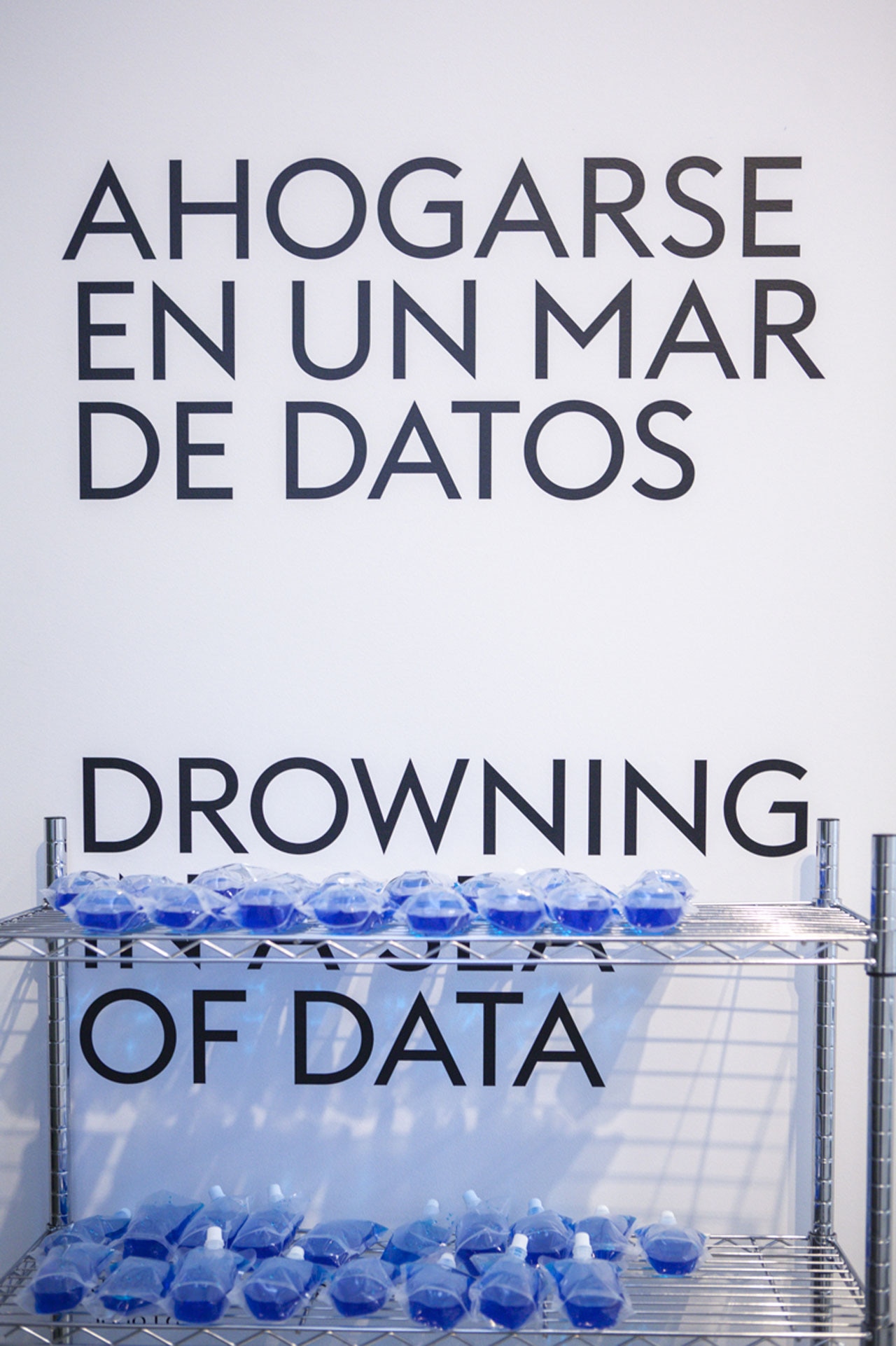
 View gallery
View gallery
In the large exhibition halls, the rooms are distorted and multiplied by a series of fabric curves which both divide and at the same time connect the space. These suspended forms appear as waves which lead to a complex and deconstructed form of navigation. However, the freedom to choose how to move in physical or virtual space is a type of narration to which we are not used.
In contemporary society, orientation is not the result of a personal choice, but an imposition determined by external factors, above all the social and cultural components in which we find ourselves immersed. The work of Clemens von Wedemeyer shows how, in cinematographic representation, the individual is more easily conceived as part of a multitude which follows a flow. Similarly, the path of the spectator through the exhibition is influenced by precise themes, while at the same time opening towards unpredictable deviations.
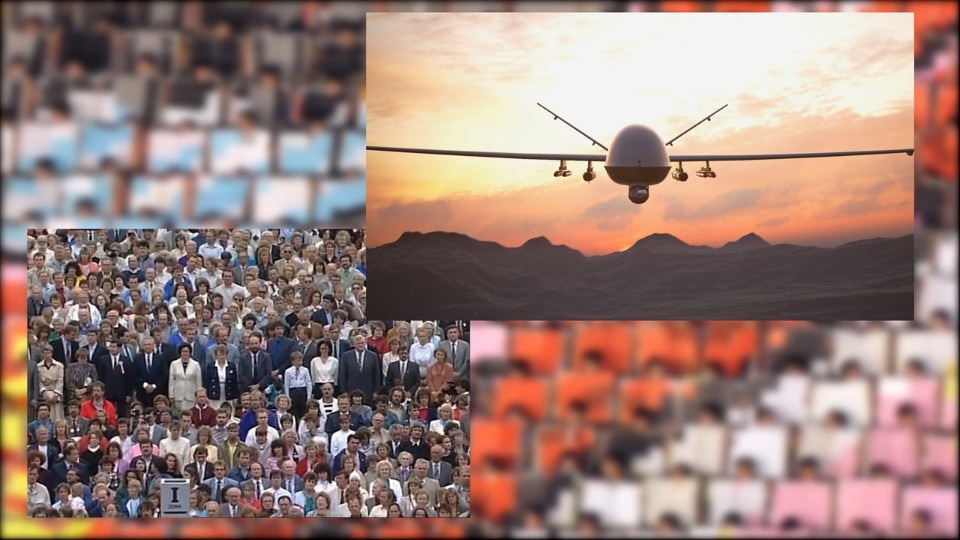
Coming to the installation by Evan Ifekoya, the visitor finds themselves beneath a mass of balloons which simulates immersion in the wave. Here, it is possible to listen to a polyphony of sounds and be mirrored in the posture of a body depicted from behind in a photograph that recalls the images by Robert Mapplethorpe.
Further on, we come across the work of Nicolás Lamas, where a number of objects have been positioned on solar panels placed on the floor like rafts transporting the remains of a lost civilisation, evoking a scene where real technology is blended with apocalyptic visions. We encounter a similar narration in the video-interview by Emma Charles with Albert France-Lanord, the architect of the Pionen, an anti-atomic bunker converted into one of the largest data centres currently in existence on the planet.
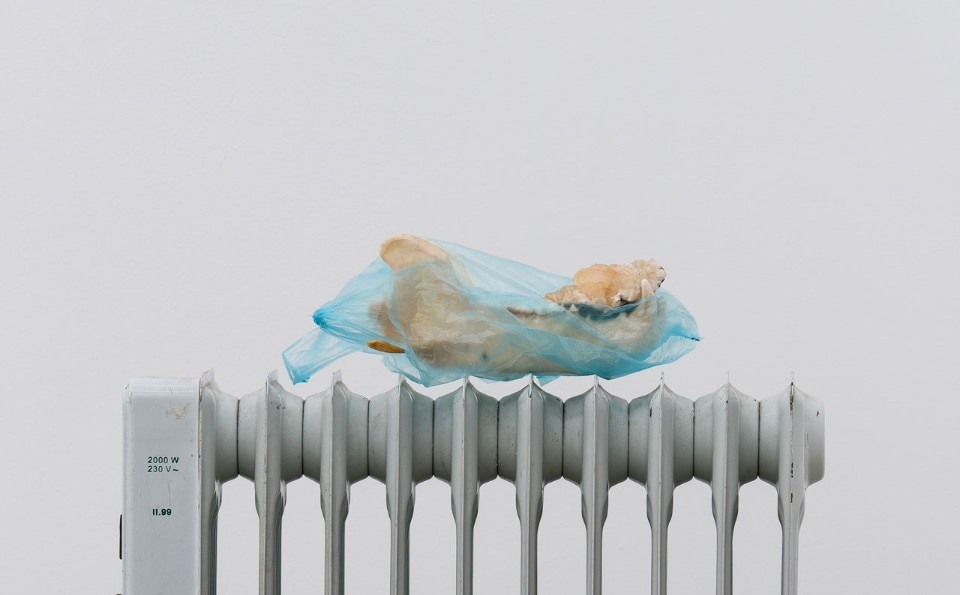
The journey towards the unknown continues and the video by Sofia Reyes depicts people in the throes of obsessive anxiety over the future. The transformation from human to post-human is unstoppable, as demonstrated by the standing sculptures by M Reme Silvestre and June Crespo, or the suspended elements by Pakui Hardware, material reside of a not-easily-identifiable passage.
The representation of the body dissolves in the surreal paintings by Tomasz Kowaksi and the language with which the human species arrogates a certain supremacy leads us to the confines with the closest version of ourselves, animals. Empty cages are portrayed in the photographs by Joanna Piotrowska. Through video, James Richards and Leslie Thornton show animal movements accompanied by unidentifiable sounds.
Lastly, in the work by Korakrit Arunanondchai a large rat embraces an empty denim jacket. Here, the human body disappears and is substituted by that of the animal with the DNA most similar to that of the human race. The distant sound of the sea seems to be saying that it is only through death and loss that we can perceive the limits of the language that allows us to navigate, but which looms over us like an untameable wave. All we can to is abandon ourselves.
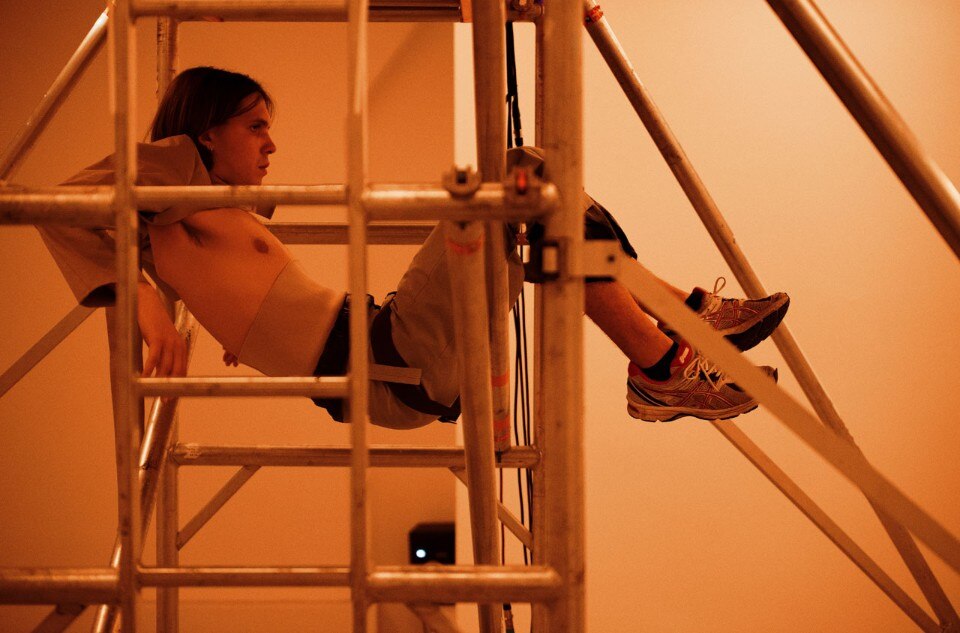
Opening image: Korakrit Arunanondchai, With history in a room filled with people with funny names 4, Video, 23’ 32’’ (2017)
- Title:
- Drowing in a Sea of Data
- Curated by:
- João Laia
- Gallery:
- La Casa Encendida
- Openeing dates:
- 1 February – 19 May 2019
- Address:
- Ronda de Valencia 2, Madrid


